
by Ria Olivier | May 22, 2021 | Environment, International Days, Legacy, Uncategorised
 In 2014 on International Biodiversity Day the theme was “Island Biodiversity”. The Department of Forestry , Fisheries and the Environment(DFFE) state the following in 2014:“The legacy of a unique evolutionary history, many island species are endemic – found nowhere else on Earth. Islands harbour higher concentrations of endemic species than do continents, and the number and proportion of endemics rises with increasing isolation, island size and topographic variety.”
In 2014 on International Biodiversity Day the theme was “Island Biodiversity”. The Department of Forestry , Fisheries and the Environment(DFFE) state the following in 2014:“The legacy of a unique evolutionary history, many island species are endemic – found nowhere else on Earth. Islands harbour higher concentrations of endemic species than do continents, and the number and proportion of endemics rises with increasing isolation, island size and topographic variety.”
 Today on International biodiversity day we celebrate Marion Island in all its diversity. “With increasing development pressures and climate change islands are now more threatened than ever before. Unless there is immediate action to save the remaining unprotected hotspot areas, the species losses will increase severely especially among those species that are endemic to these islands. Protecting them is vital and necessary, to ensure their conservation for future generations.” – Media release DFFE
Today on International biodiversity day we celebrate Marion Island in all its diversity. “With increasing development pressures and climate change islands are now more threatened than ever before. Unless there is immediate action to save the remaining unprotected hotspot areas, the species losses will increase severely especially among those species that are endemic to these islands. Protecting them is vital and necessary, to ensure their conservation for future generations.” – Media release DFFE

 The theme for this year is “We are part of the solution for nature”- in an Instagram post David Hedding(left) highlight the landscape response to climate – Did you know South Africa had a glacier until very recently?
The theme for this year is “We are part of the solution for nature”- in an Instagram post David Hedding(left) highlight the landscape response to climate – Did you know South Africa had a glacier until very recently?
“In 1966, Dr Brian Huntley(right) photographed the summit region of Marion Island known as the ‘Ice Plateau’.

 Flow lines visible in the photograph showed that ice was moving (top – image 1- left). In 2004, while doing my Masters, I decided to return to same spot and rephotograph the Ice Plateau to compare (middle – image 1- left). Sadly, much of the ice was melting away and when assessed in the context of climate amelioration recorded at the island provided evidence for the most drastic landscape response to climate change on the island. In 2021, I decided to try get back up to the Ice Plateau. Fortunately, I got a lucky break and managed to get back up on a relatively decent day to summit Mascarin Peak (image 4 -right) and rephotograph the area again (bottom – image 1- left).
Flow lines visible in the photograph showed that ice was moving (top – image 1- left). In 2004, while doing my Masters, I decided to return to same spot and rephotograph the Ice Plateau to compare (middle – image 1- left). Sadly, much of the ice was melting away and when assessed in the context of climate amelioration recorded at the island provided evidence for the most drastic landscape response to climate change on the island. In 2021, I decided to try get back up to the Ice Plateau. Fortunately, I got a lucky break and managed to get back up on a relatively decent day to summit Mascarin Peak (image 4 -right) and rephotograph the area again (bottom – image 1- left).

 Sadly, I noticed even further melt-out with all the ice caves now gone and much of the remaining buried ice also having disappeared (image 2 -left & image 3-right).
Sadly, I noticed even further melt-out with all the ice caves now gone and much of the remaining buried ice also having disappeared (image 2 -left & image 3-right).

 The remaining ice was protected from increasing air temperatures and insolation (solar radiation) under a layer of scoria so the ice probably lasted a lot longer than it should have and although a few pockets of buried ice were still visible the ‘Ice Plateau’ as it was once called is no more (images 5-left & 6-right).”
The remaining ice was protected from increasing air temperatures and insolation (solar radiation) under a layer of scoria so the ice probably lasted a lot longer than it should have and although a few pockets of buried ice were still visible the ‘Ice Plateau’ as it was once called is no more (images 5-left & 6-right).”
Be part of the solution give your comments on The Minister of Forestry, Fisheries and the Environment, Ms Barbara Creecy, on the revised National Biodiversity Framework (NBF) 2019 to 2024. Minister Creecy granted an extension until 07 June 2021 for public consultation. An electronic copy of the Government Notice and the draft revised framework can be downloaded from the Department of Forestry, Fisheries and the Environment website from the following link: Biodiversity Act, 2004 (Act No. 10 Of 2004): draft revised National Biodiversity Framework published for public comment in terms of the National Environmental Management [G 44229 – GoN 171]
Images, captions: David Hedding
 Dr Brian Huntley publication available form the Antarctic Legacy fo South Africa antarcticlegacy@sun.ac.za
Dr Brian Huntley publication available form the Antarctic Legacy fo South Africa antarcticlegacy@sun.ac.za

by Ria Olivier | Apr 12, 2021 | Announcement, Environment, Invasion Biology, Marion Island, Mice Eradication


Do you want to be involved in this project or just want to be informed? The project’s webpage and social pages will keep you up to date and the SANAP and ALSA website will post on the activities.
 “Marion Island is the jewel in South Africa’s island crown – it is huge and beautiful, hosts an astonishing array of endemic species and charismatic marine megafauna, and is pristine. Or nearly pristine.
“Marion Island is the jewel in South Africa’s island crown – it is huge and beautiful, hosts an astonishing array of endemic species and charismatic marine megafauna, and is pristine. Or nearly pristine.
“After cats were eradicated from Marion Island in the early 1990s (it remained the largest island on earth cleared of cats for many years), mice were left as the only introduced mammal there. At the time, no thought was given to tackling mice, even though their impacts on invertebrates such as the flightless moths and weevils, plant communities, nutrient cycles, etc., were gigantic. Little did we know that mice could become such a significant threat to seabirds. Work done at Gough Island demonstrated that mice can wreak devastation on seabird colonies, and now they’re attacking seabird chicks at Marion Island, with increasing impacts each year.”
 The Mouse-Free Marion project is gaining increasing momentum, as we work towards an eradication operation in the austral winter of 2023. The Mouse-Free Marion Project, a collaborative project underway to eradicate rodents from Marion Island, currently has the following opportunities available:
The Mouse-Free Marion project is gaining increasing momentum, as we work towards an eradication operation in the austral winter of 2023. The Mouse-Free Marion Project, a collaborative project underway to eradicate rodents from Marion Island, currently has the following opportunities available:
On the projects website there is FAQ that can answer some of yours:
- How long will the operation take?
- How will the mice be killed?
- Is this humane?
- How long does the poison stay in the environment?
- How did the mice get there?
- How can we be sure that this will work?
- Why don’t the birds protect themselves?
- Why is the operation so expensive?
- How will you prevent mice from getting back on the island in future?
- What about other wildlife / collateral damage?
- What will happen to the carcasses?
- Has this ever been done before?
- Has anything on the island become dependent on the mice as prey?
Text taken from “Saving Marion Island’s Seabirds. The Mouse Free Marion Project”
Photo credit – Image of Wondering Albatrosses: Ben Dilley

by Ria Olivier | Mar 23, 2021 | Current Event, Environment, International Days, Meteorology, Overwintering Team, Science

On the 23rd March 2021, we celebrate World Meteorological Day around the globe. This day has great significance and value, as it highlights the critical balance and interaction between mankind and the earth’s atmosphere. The 23rd March also commemorates the establishment of the World Meteorological Organization (WMO) in 1950 and each year a new theme or slogan is released.  This year the theme for 2021 is “The ocean, our climate and weather.” This theme highlights the interconnected relationship between the atmosphere, ocean and climate. The ocean covers approximately 70% of the globe and thus plays a vital role in the climate change and supports life on earth. Therefore it is essential that continuous research is conducted to monitor the relationship between the ocean and atmosphere and subsequent changes experienced. This year’s theme celebrates the WMO’s focus on connecting the ocean, climate and weather within the Earth System.
This year the theme for 2021 is “The ocean, our climate and weather.” This theme highlights the interconnected relationship between the atmosphere, ocean and climate. The ocean covers approximately 70% of the globe and thus plays a vital role in the climate change and supports life on earth. Therefore it is essential that continuous research is conducted to monitor the relationship between the ocean and atmosphere and subsequent changes experienced. This year’s theme celebrates the WMO’s focus on connecting the ocean, climate and weather within the Earth System.
 The South African Antarctic Programme (SANAP) and South African Weather Services (SAWS) plays an integral role in monitoring the southern climate. Overwintering meteorologists, assistants and technicians are stationed at all three South African research bases namely, Marion Island, Gough Island and SANAE Base. These teams are tasked with the following duties which are performed throughout the year:
The South African Antarctic Programme (SANAP) and South African Weather Services (SAWS) plays an integral role in monitoring the southern climate. Overwintering meteorologists, assistants and technicians are stationed at all three South African research bases namely, Marion Island, Gough Island and SANAE Base. These teams are tasked with the following duties which are performed throughout the year:
- Execute and co-ordinate surface meteorological and atmospheric research projects as sanctioned by the Marine Section of SAWS.
- Co-ordinate shift management of the meteorological team.
- Perform daily meteorological observations and release of weather balloons.
- Maintenance and appropriate calibration/validation of all observational equipment.
- Conduct quality control of data, report writing and asset control.
The current overwintering meteorologists in the field are:
Marion Island Base:



(l-r) Nkoane Mathabata (Senir Meteorologist) – Siya Ngcobo and Collen Maphaha (assitant meteorologists)
Gough Island Base:


 (l-r) Zinhle Shongwe (Senior Meteorologist), Dylan Seaton (Assistant Meteoroglist) and Asavela Somaxaka (Meteorological Technician).
(l-r) Zinhle Shongwe (Senior Meteorologist), Dylan Seaton (Assistant Meteoroglist) and Asavela Somaxaka (Meteorological Technician).
Antarctic Base (SANAE):
 Gerard (Boy) Oppel (Senior Meteorologist)
Gerard (Boy) Oppel (Senior Meteorologist)
 It is also important to note that weather observations are collected by SAWS ship based personnel during expeditions aboard the SA Agulhas II. The real-time data collected is used for a myriad of operations on board and aids in decision making for safe ship operations and passage. This data is also archived by SAWS and used in weather models which improves forecasting abilities and provides insight to the dynamic relationship between atmosphere and ocean.
It is also important to note that weather observations are collected by SAWS ship based personnel during expeditions aboard the SA Agulhas II. The real-time data collected is used for a myriad of operations on board and aids in decision making for safe ship operations and passage. This data is also archived by SAWS and used in weather models which improves forecasting abilities and provides insight to the dynamic relationship between atmosphere and ocean.
Fun Fact:

Panoramic photo of Vostok Station. (https://en.wikipedia.org/wiki/Vostok_Station)
At a Russian Base named Vostok Station, the coldest air temperature in history was recorded in July 1983. The air temperature recorded was – 89ºC.
 See webinar to attend on World Meteorology Day 2021
See webinar to attend on World Meteorology Day 2021
Cover Image: South Thule Island, photographed by Tahlia Henry

by Ria Olivier | Sep 18, 2020 | Announcement, Current Event, Environment, Marion Island
 Department of Environment Forestry and Fisheries Media Release: International wildlife documentary series to be filmed on Marion Island – 16 September 2020
Department of Environment Forestry and Fisheries Media Release: International wildlife documentary series to be filmed on Marion Island – 16 September 2020

by Ria Olivier | Apr 20, 2020 | Announcement, Environment, Gough Island, Heritage Day, Important Dates, International Days, sub-Antarctic


 “World Heritage Day or the International Day of Monuments and Sites has always been an occasion to reflect upon – and often visit – heritage sites that are important to us. This year, during the Covid-19 crisis, most of us can only enjoy our heritage online, through virtual visits and tours, as well as social media posts.” – UNESCO (Visit the ALSA archive and the SANAP website photo galleries to see images)
“World Heritage Day or the International Day of Monuments and Sites has always been an occasion to reflect upon – and often visit – heritage sites that are important to us. This year, during the Covid-19 crisis, most of us can only enjoy our heritage online, through virtual visits and tours, as well as social media posts.” – UNESCO (Visit the ALSA archive and the SANAP website photo galleries to see images)
Owing largely to its spectacular abundance of seabirds, and its unusual and reputedly pristine landscape, Gough Island was declared a wildlife reserve under the Tristan da Cunha Conservation Ordinance of 1976, gained Scientific/Strict Nature Reserve Status under IUCN Category I in 1985, was inscribed on the IUCN World Heritage list (under criteria iii, iv) in 1995, and in 1997 became a nature reserve under the Tristan da Cunha Conservation (Amendment) Ordinance. The nature reserve now encompasses a 12 nautical mile zone around the shore. Activities on Gough Island and in the surrounding waters are regulated by formal ordinances of Tristan da Cunha, including those for Conservation, for Export and Import Control, and for Fisheries Limits, and by the adoption of a formal manage1nent plan. (From “Gough Island; a Natural history” by C Hanel, SL Chown and KJ Gaston)



 The Gough and Inaccessible Islands World Heritage Site Management Plan focuses on identifying priority actions for the conservation of the property over a five year period, and does not supersede the two existing Management Plans for Gough and Inaccessible Islands. Separate zoning strategies for Gough and Inaccessible Islands have been developed. On Gough, there are Logistic, Marine, Scientific research, and Conservation zones; on Inaccessible there are Accommodation, Natural, Wilderness, and Marine zones. Within these various areas, defined in detail in the respective Management Plans, certain activities are constrained or allowed. A single zoning strategy is needed covering the whole World Heritage property, including the marine area. –UNESCO
The Gough and Inaccessible Islands World Heritage Site Management Plan focuses on identifying priority actions for the conservation of the property over a five year period, and does not supersede the two existing Management Plans for Gough and Inaccessible Islands. Separate zoning strategies for Gough and Inaccessible Islands have been developed. On Gough, there are Logistic, Marine, Scientific research, and Conservation zones; on Inaccessible there are Accommodation, Natural, Wilderness, and Marine zones. Within these various areas, defined in detail in the respective Management Plans, certain activities are constrained or allowed. A single zoning strategy is needed covering the whole World Heritage property, including the marine area. –UNESCO


 The site, located in the south Atlantic, is one of the least-disrupted island and marine ecosystems in the cool temperate zone. The spectacular cliffs of Gough, towering above the ocean, are home to one of the world’s largest colonies of sea birds. Gough Island is home to two endemic species of land birds, the Gallinule Comeri (Gough Moorhen-below left)and the Gough Rowettia Goughhensis (Gough Finch- below middle,right), as well as to 12 endemic species of plants.
The site, located in the south Atlantic, is one of the least-disrupted island and marine ecosystems in the cool temperate zone. The spectacular cliffs of Gough, towering above the ocean, are home to one of the world’s largest colonies of sea birds. Gough Island is home to two endemic species of land birds, the Gallinule Comeri (Gough Moorhen-below left)and the Gough Rowettia Goughhensis (Gough Finch- below middle,right), as well as to 12 endemic species of plants.



Although now most widely known as a haven for seabirds and an important conservation area in the Southern Ocean, the island has long caught the attention of mariners and adventurers. At first, the island was appreciated as a source of perennial fresh water, whilst later its strategic position, unusual terrestrial flora and fauna, and marine living resources have proven the attraction.
 Its position in the path of cold fronts generated in the far Southern Ocean and on their way to South Africa has meant that the conditions experienced at Gough Island serve as an early warning for those that can be expected in South Africa and along the Cape sea route. for this reason, a South African meteorological station has been maintained at the island in an agreement reached with the administration of Tristan da Cunha. From: “Gough Island; a Natural history” by C Hanel, SL Chown and KJ Gaston
Its position in the path of cold fronts generated in the far Southern Ocean and on their way to South Africa has meant that the conditions experienced at Gough Island serve as an early warning for those that can be expected in South Africa and along the Cape sea route. for this reason, a South African meteorological station has been maintained at the island in an agreement reached with the administration of Tristan da Cunha. From: “Gough Island; a Natural history” by C Hanel, SL Chown and KJ Gaston
Photo Credits: G Roussouw, T McSherry, J Cleeland

by Ria Olivier | Apr 15, 2020 | Antarctica, Environment, Research, Take-Over Operations

 My name is Khuselwa a.k.a. Kusi Ngxabani, Deputy Director: Vessel and Helicopter Management with effect from 01 September 2019. I joined the erstwhile Department of Environmental Affairs & Tourism in 1997 as an Administrative Clerk, in the Directorate: Antarctica and Islands, was promoted to Senior Administration Officer in 2003 and later promoted to the Assistant Director: Scientific Liaison and Administration Support position in the same directorate from 1 April 2008 to 31 May 2015. My directorate is dealing specifically with the South African National Antarctic Programme (SANAP). SANAP’s mandate is to provide logistical support to Researchers (Scientists). From 01 June 2015 I was promoted Deputy Director, heading the Sub-directorate: Travel and Fleet Services in the Directorate: Facilities and Administration Services (Cape Town) within the department. I served the aforementioned directorate until 31 August 2019.
My name is Khuselwa a.k.a. Kusi Ngxabani, Deputy Director: Vessel and Helicopter Management with effect from 01 September 2019. I joined the erstwhile Department of Environmental Affairs & Tourism in 1997 as an Administrative Clerk, in the Directorate: Antarctica and Islands, was promoted to Senior Administration Officer in 2003 and later promoted to the Assistant Director: Scientific Liaison and Administration Support position in the same directorate from 1 April 2008 to 31 May 2015. My directorate is dealing specifically with the South African National Antarctic Programme (SANAP). SANAP’s mandate is to provide logistical support to Researchers (Scientists). From 01 June 2015 I was promoted Deputy Director, heading the Sub-directorate: Travel and Fleet Services in the Directorate: Facilities and Administration Services (Cape Town) within the department. I served the aforementioned directorate until 31 August 2019.
 What drives your passion in the job you do in the department? (Image Kusi with departure of SANE59)
What drives your passion in the job you do in the department? (Image Kusi with departure of SANE59)
One thing one should know is that you can take the girl out of SANAP but you cannot take SANAP out of the girl. I just love working with people. All the reason when opportunity presented itself to return to the Directorate: Southern Oceans and Antarctic Support to contribute to SANAP I did not think twice but grabbed it with both hands. It was no promotion but a lateral transfer. The positive and pleasant attitude of the people you work with gets you through the day. You know that feeling that whatever situation you come across, you can actually grab the bull by its horns and conquer anything. I came back to a different Sub-directorate with different responsibilities than what I was doing prior to leaving in 2015. For now it feels like a mammoth task but with my dedication and zeal I know I will make it, I’ll take it one step at a time. The thought of making a difference in the lives I touch with people I serve and work with is enormous.

 What do you find most challenging and rewarding about working within SANAP?
What do you find most challenging and rewarding about working within SANAP?
The most challenging aspect of my job is when people make their poor planning my priority. For an example, my most recent relief voyage to Antarctica as a Departmental Coordinating Officer (after 7 years) came with challenges especially with the supply of goods. Some people do not have sense of urgency and that could be detrimental to any relief voyage which has a scheduled date of departure and return. What is rewarding however, is the fact that my contribution to the department and SANAP has an enormous impact on the performance of others. In addition, to have a lot of work, feel you are ‘snowed under’ but leave the work place having that fulfilment that you have met the target you set for yourself, having made a difference in one way or the other. Being involved in organising departmental activities gives me adrenalin rush and even most rewarding when the functions are successful. I am usually asked to be Programme Director for events within the department. See interview with Kusi at SANAE IV during takeover 2019-2020
What do you consider to be your greatest achievements in your career life thus far?
To be appointed as the first Black Woman Departmental Coordinating Officer (DCO) for the 2006 Marion Island relief voyage. What an experience and achievement. Having studied Part-time and graduated in National Diploma: Public Management and later B-Tech: Public Management. Those were the tough four (4) years of my life as leaving work at 16:00 to be in class from 17:00 until after 21:00 was no walk in the park. Had I studied at a younger age, by now I would have been further in my career, however, as a single parent I do not regret opting to raise my son first. He means the world to me; he is the Apple of my eye.
 What would your advice be to those who want to follow the same career path as you?
What would your advice be to those who want to follow the same career path as you?
When afforded an opportunity grab it with both hands and make the best out of it. Keep pushing and strive for high ideals and remember, Rome was not built in a day. Letta Mbulu sings “…and the road will be muddy and rough, we will get there you know just how we will get there, we know we will carry on…” There is a saying that curiosity once killed a cat but in the career field I stand to differ with that notion. Always have hunger for knowledge, be curious, further your studies and you will realise that only the sky is the limit! In the workplace I live with the words of Max Ehrmann in his ‘Desiderata’, “Listen to others, even to the dull and the ignorant, they too have their story. Avoid loud and aggressive persons; they are vexations to the spirit”. From a person extract what is positive and inspiring and leave the rest. Always keep your head above water, keep the faith and never stop praying
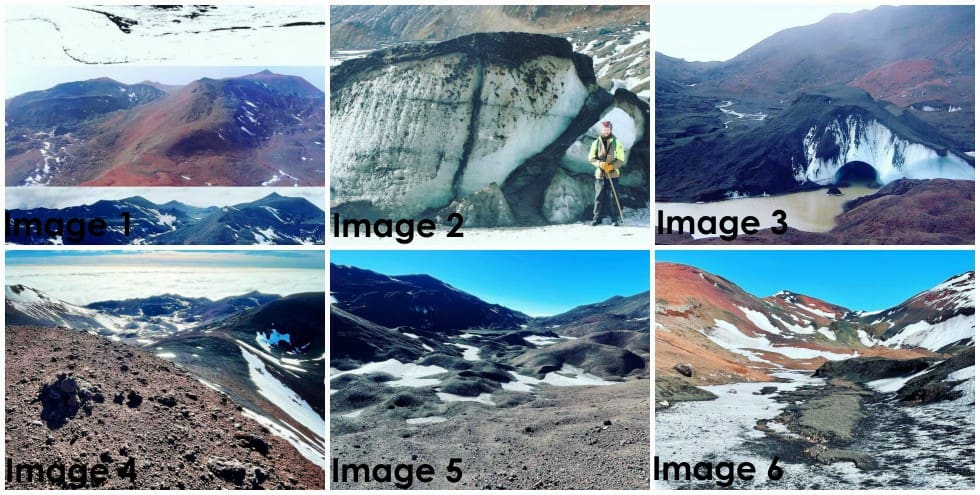
 In 2014 on International Biodiversity Day the theme was “Island Biodiversity”. The Department of Forestry , Fisheries and the Environment(DFFE) state the following in 2014:“The legacy of a unique evolutionary history, many island species are endemic – found nowhere else on Earth. Islands harbour higher concentrations of endemic species than do continents, and the number and proportion of endemics rises with increasing isolation, island size and topographic variety.”
In 2014 on International Biodiversity Day the theme was “Island Biodiversity”. The Department of Forestry , Fisheries and the Environment(DFFE) state the following in 2014:“The legacy of a unique evolutionary history, many island species are endemic – found nowhere else on Earth. Islands harbour higher concentrations of endemic species than do continents, and the number and proportion of endemics rises with increasing isolation, island size and topographic variety.”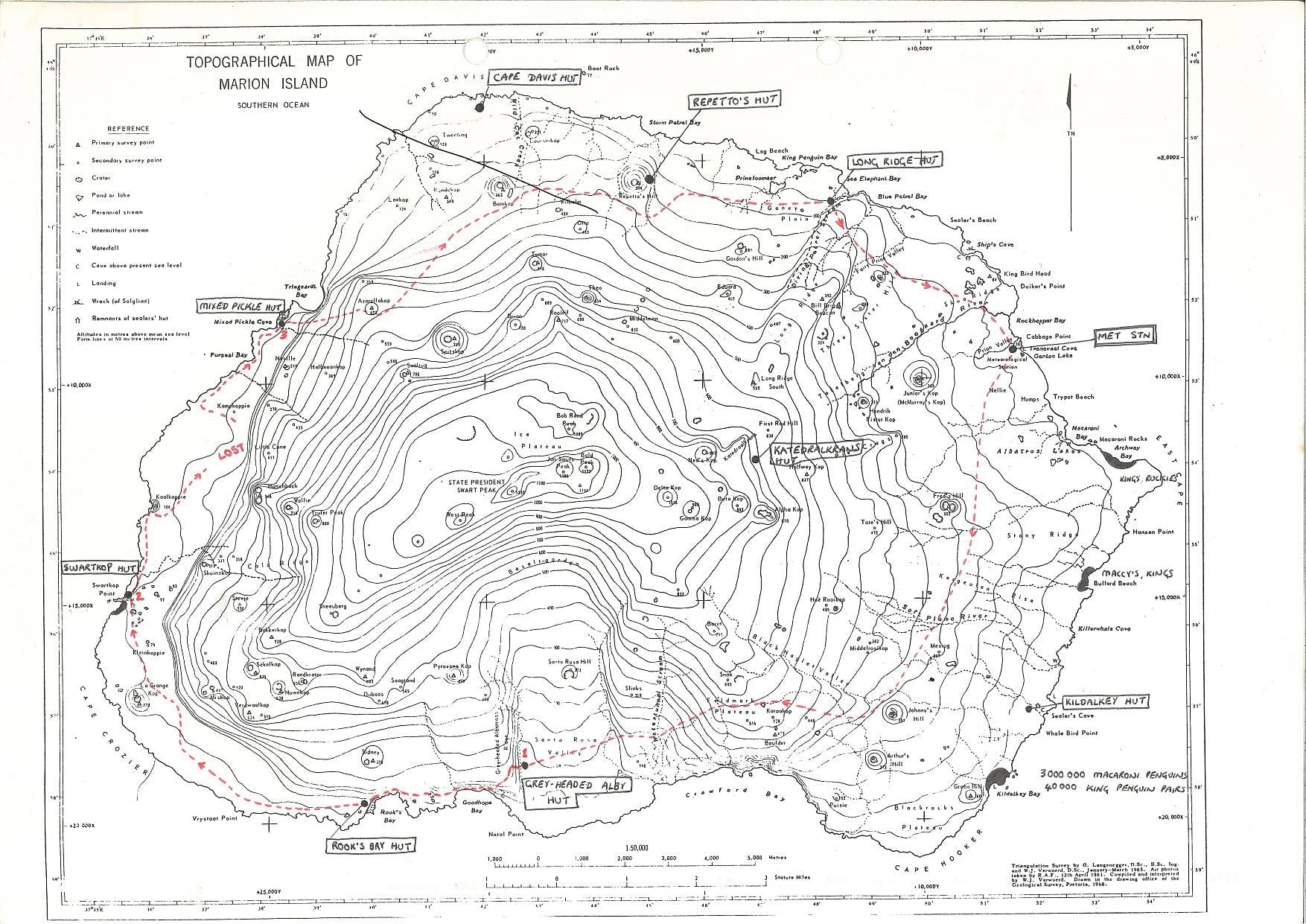 Today on International biodiversity day we celebrate Marion Island in all its diversity. “With increasing development pressures and climate change islands are now more threatened than ever before. Unless there is immediate action to save the remaining unprotected hotspot areas, the species losses will increase severely especially among those species that are endemic to these islands. Protecting them is vital and necessary, to ensure their conservation for future generations.” – Media release DFFE
Today on International biodiversity day we celebrate Marion Island in all its diversity. “With increasing development pressures and climate change islands are now more threatened than ever before. Unless there is immediate action to save the remaining unprotected hotspot areas, the species losses will increase severely especially among those species that are endemic to these islands. Protecting them is vital and necessary, to ensure their conservation for future generations.” – Media release DFFE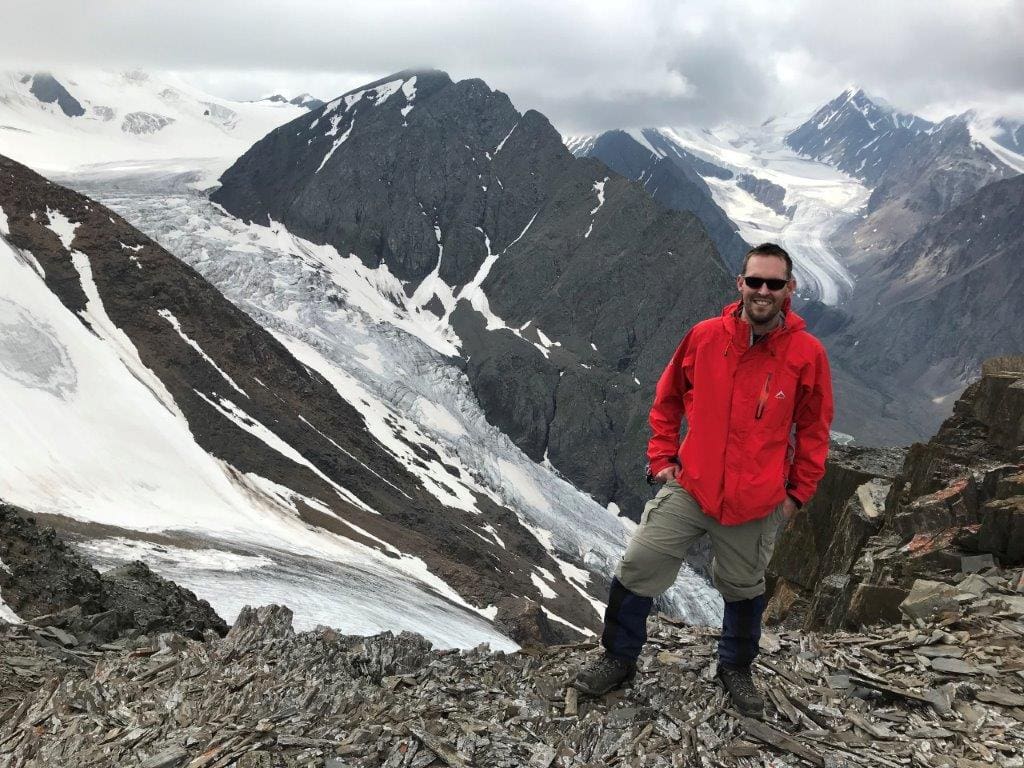
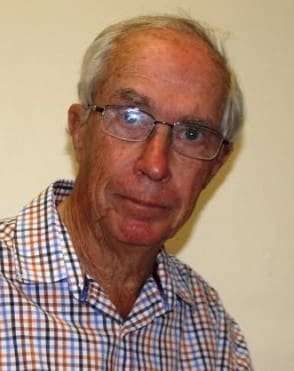 The theme for this year is “We are part of the solution for nature”- in an Instagram post David Hedding(left) highlight the landscape response to climate – Did you know South Africa had a glacier until very recently?
The theme for this year is “We are part of the solution for nature”- in an Instagram post David Hedding(left) highlight the landscape response to climate – Did you know South Africa had a glacier until very recently?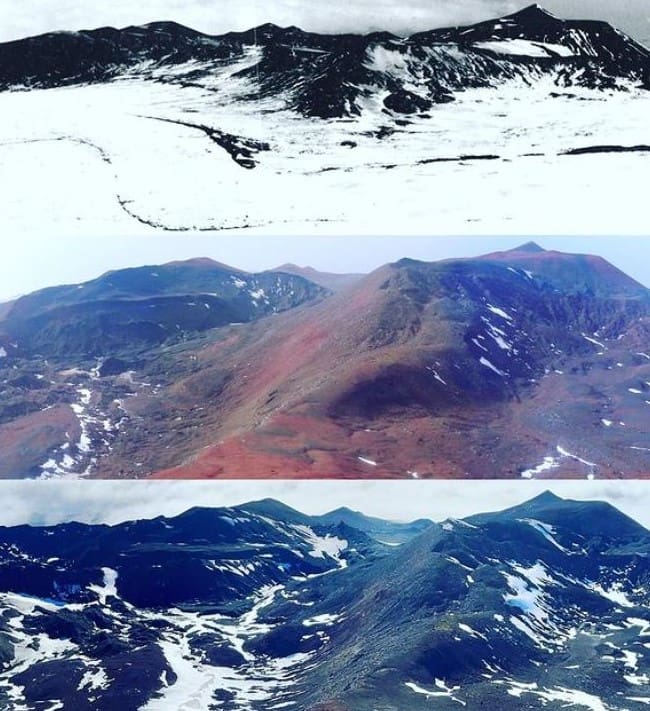
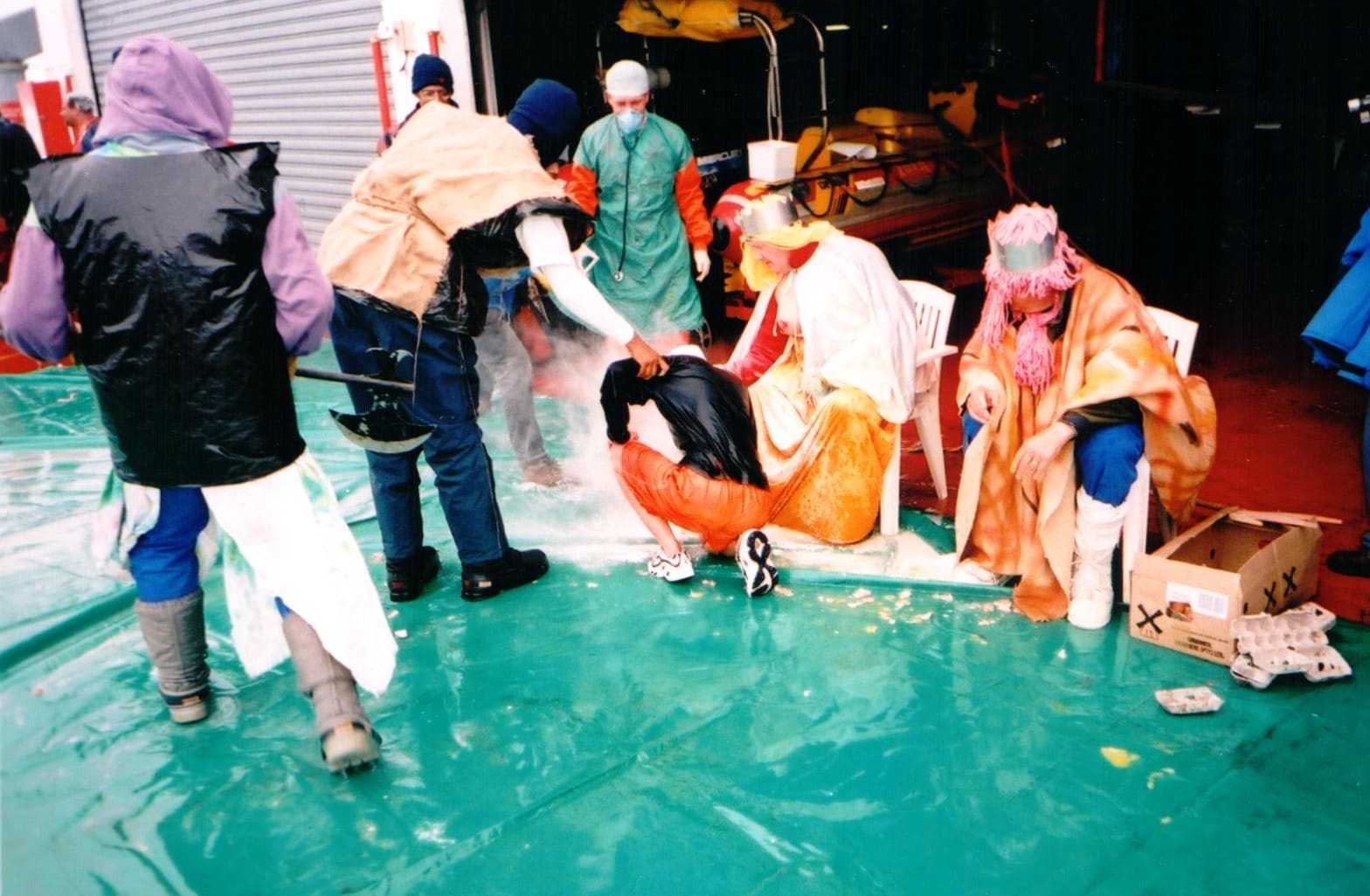 Flow lines visible in the photograph showed that ice was moving (top – image 1- left). In 2004, while doing my Masters, I decided to return to same spot and rephotograph the Ice Plateau to compare (middle – image 1- left). Sadly, much of the ice was melting away and when assessed in the context of climate amelioration recorded at the island provided evidence for the most drastic landscape response to climate change on the island. In 2021, I decided to try get back up to the Ice Plateau. Fortunately, I got a lucky break and managed to get back up on a relatively decent day to summit Mascarin Peak (image 4 -right) and rephotograph the area again (bottom – image 1- left).
Flow lines visible in the photograph showed that ice was moving (top – image 1- left). In 2004, while doing my Masters, I decided to return to same spot and rephotograph the Ice Plateau to compare (middle – image 1- left). Sadly, much of the ice was melting away and when assessed in the context of climate amelioration recorded at the island provided evidence for the most drastic landscape response to climate change on the island. In 2021, I decided to try get back up to the Ice Plateau. Fortunately, I got a lucky break and managed to get back up on a relatively decent day to summit Mascarin Peak (image 4 -right) and rephotograph the area again (bottom – image 1- left).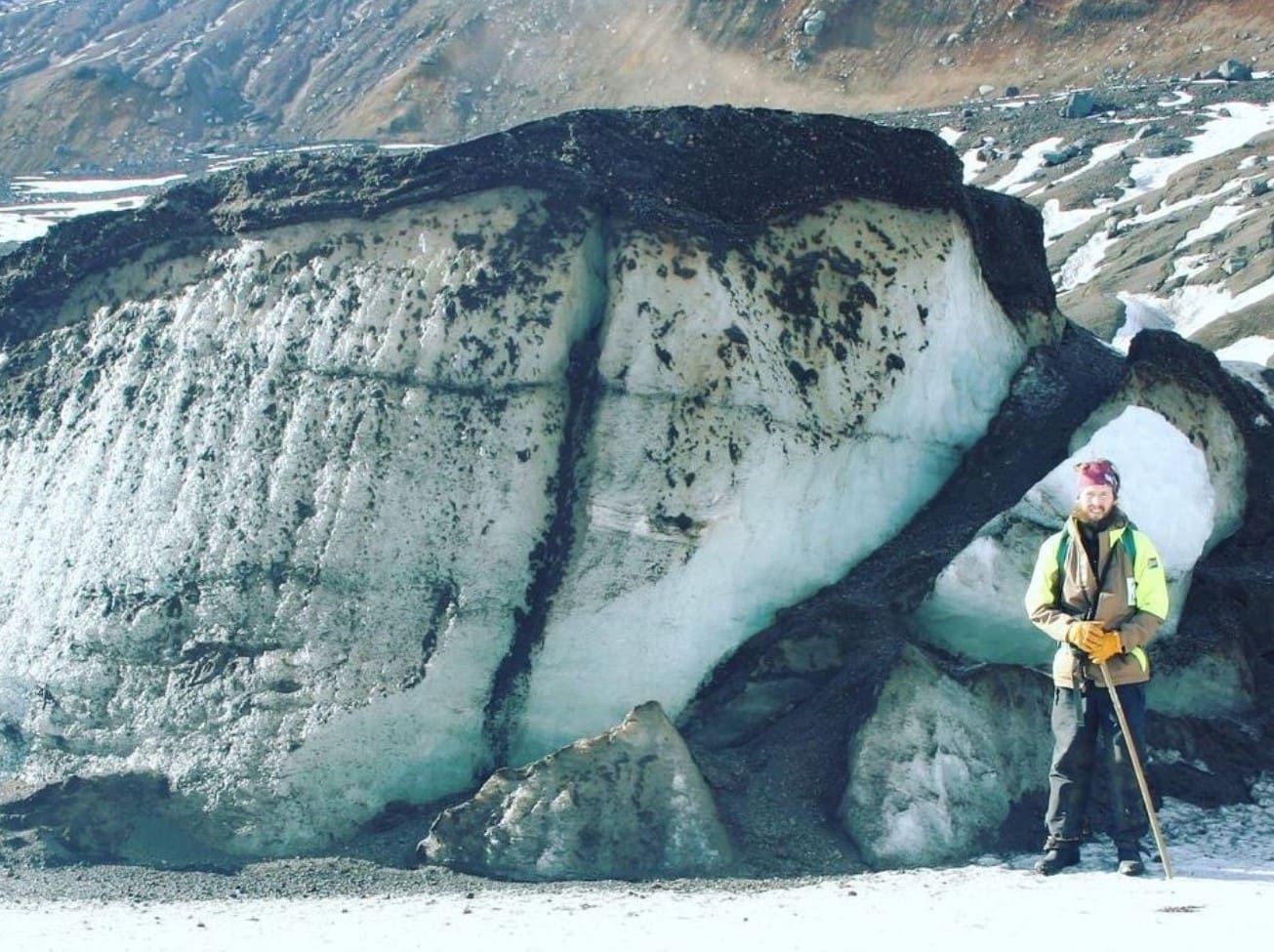
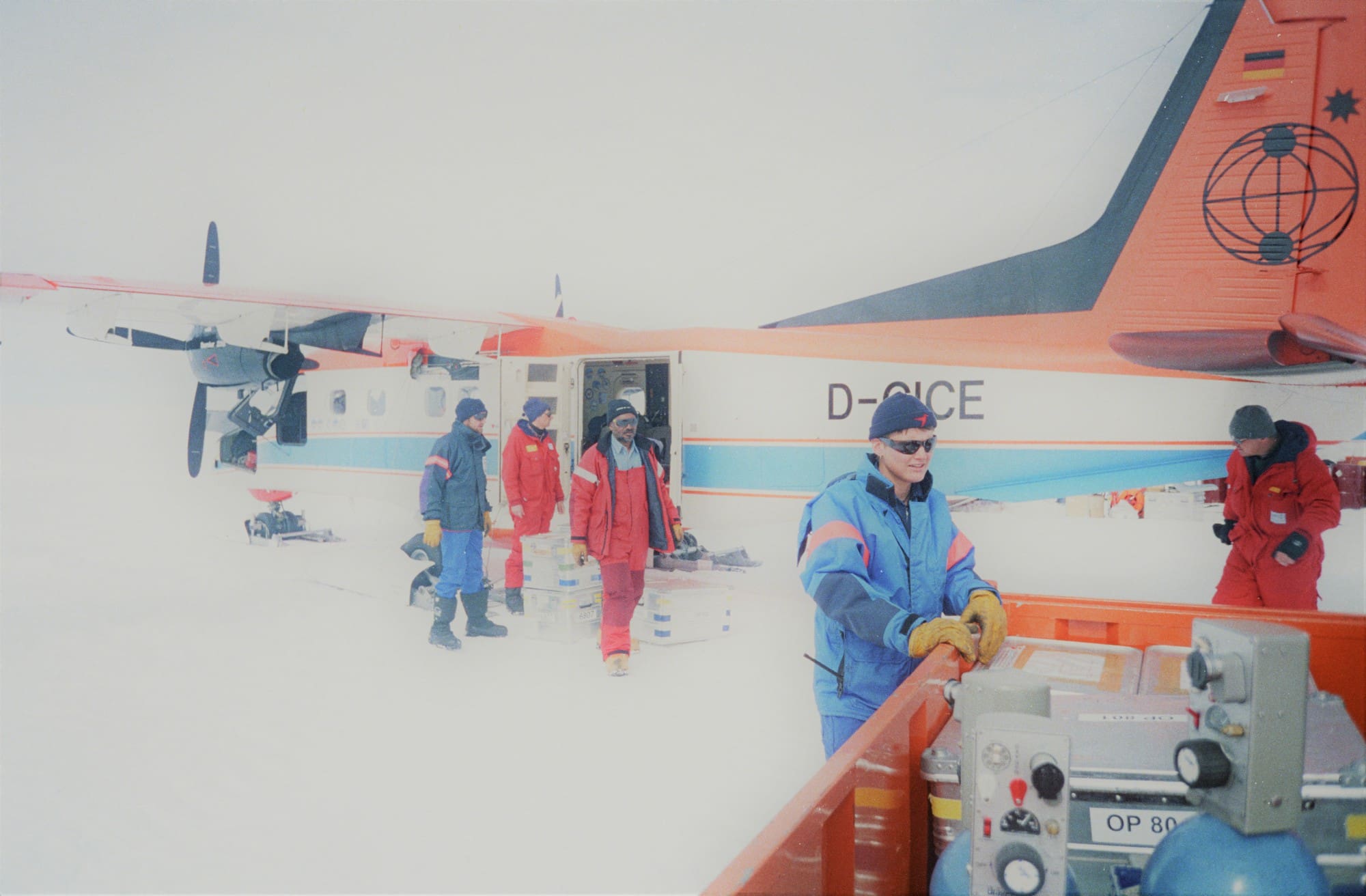 Sadly, I noticed even further melt-out with all the ice caves now gone and much of the remaining buried ice also having disappeared (image 2 -left & image 3-right).
Sadly, I noticed even further melt-out with all the ice caves now gone and much of the remaining buried ice also having disappeared (image 2 -left & image 3-right).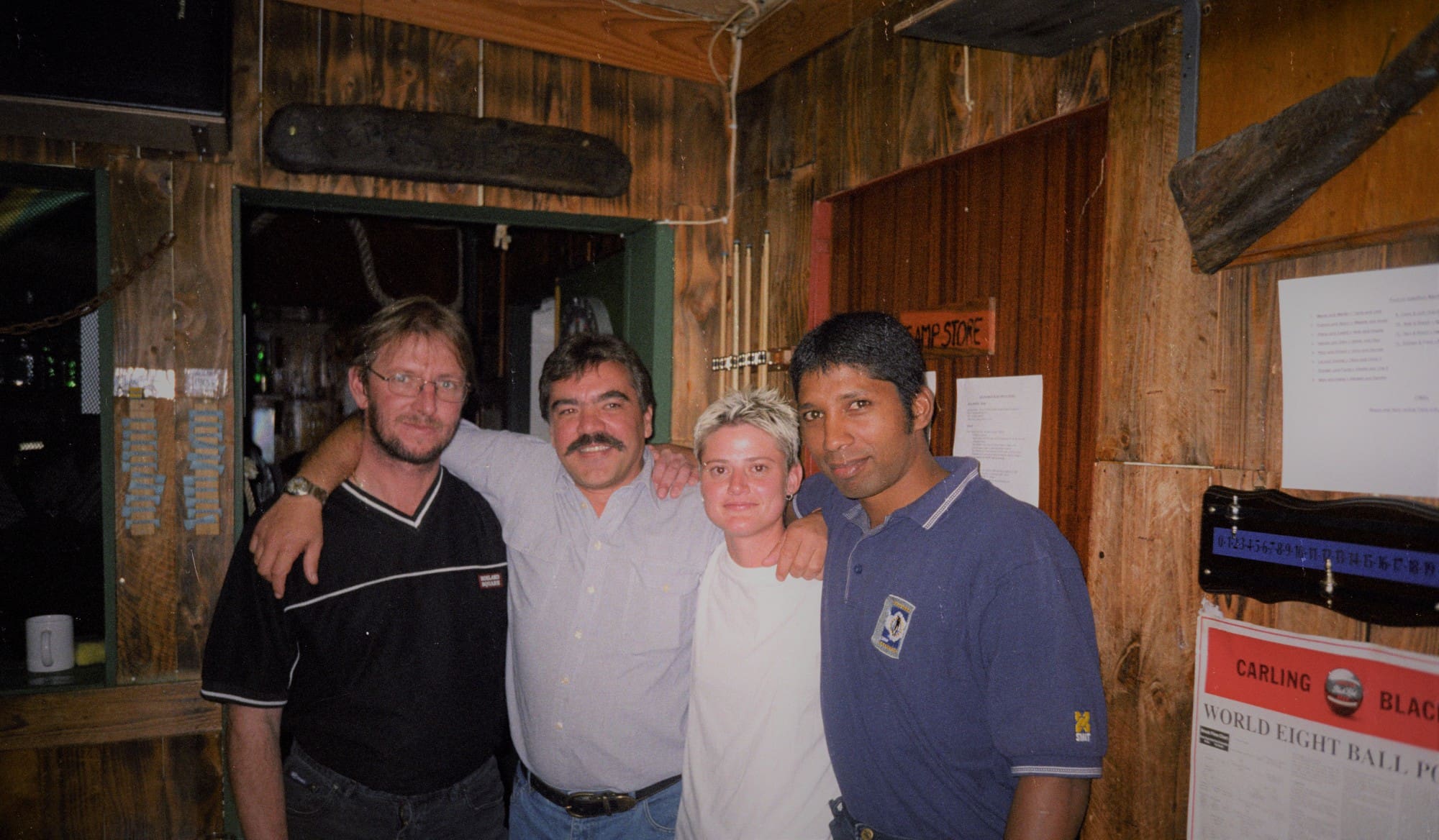
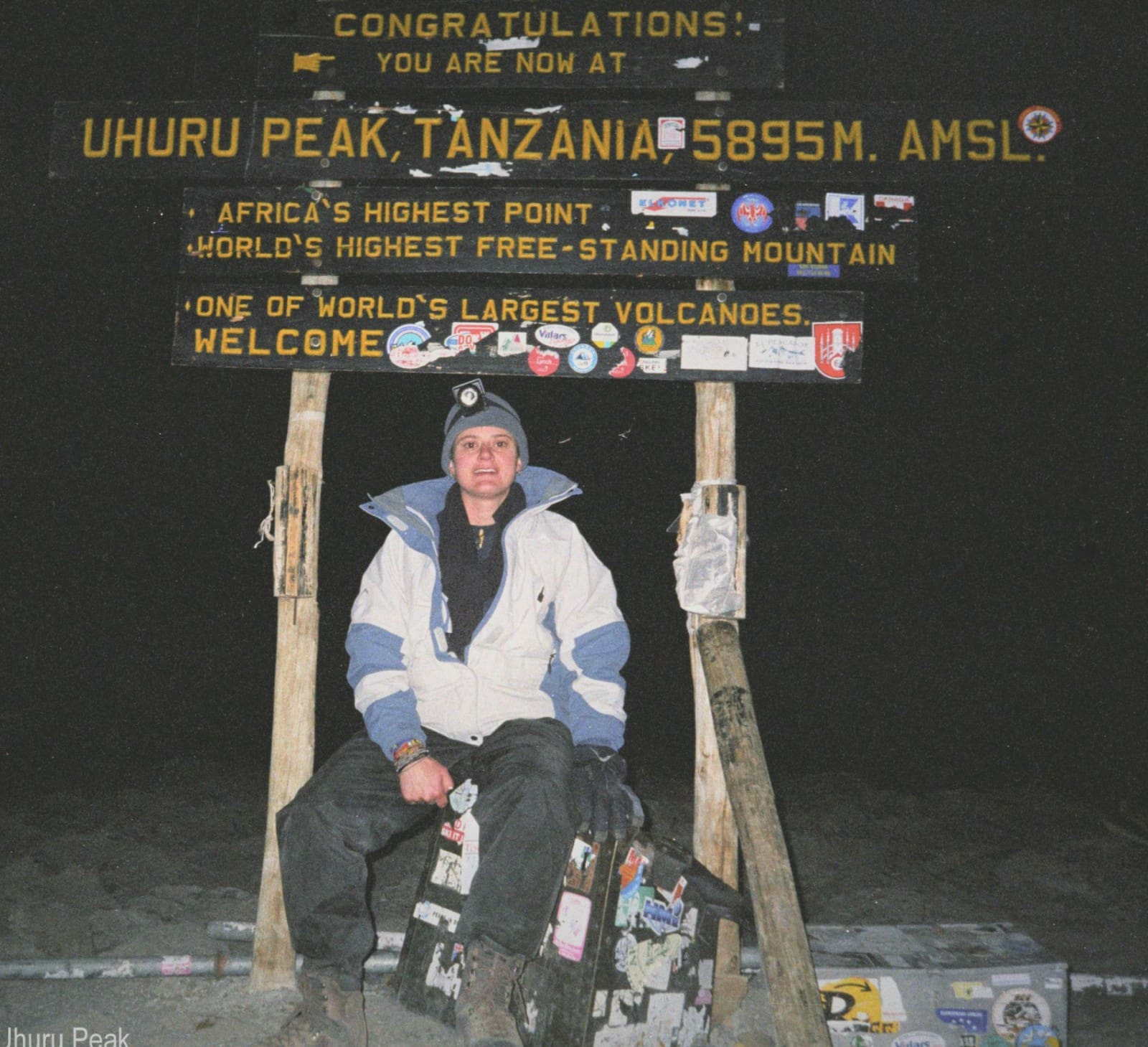 The remaining ice was protected from increasing air temperatures and insolation (solar radiation) under a layer of scoria so the ice probably lasted a lot longer than it should have and although a few pockets of buried ice were still visible the ‘Ice Plateau’ as it was once called is no more (images 5-left & 6-right).”
The remaining ice was protected from increasing air temperatures and insolation (solar radiation) under a layer of scoria so the ice probably lasted a lot longer than it should have and although a few pockets of buried ice were still visible the ‘Ice Plateau’ as it was once called is no more (images 5-left & 6-right).”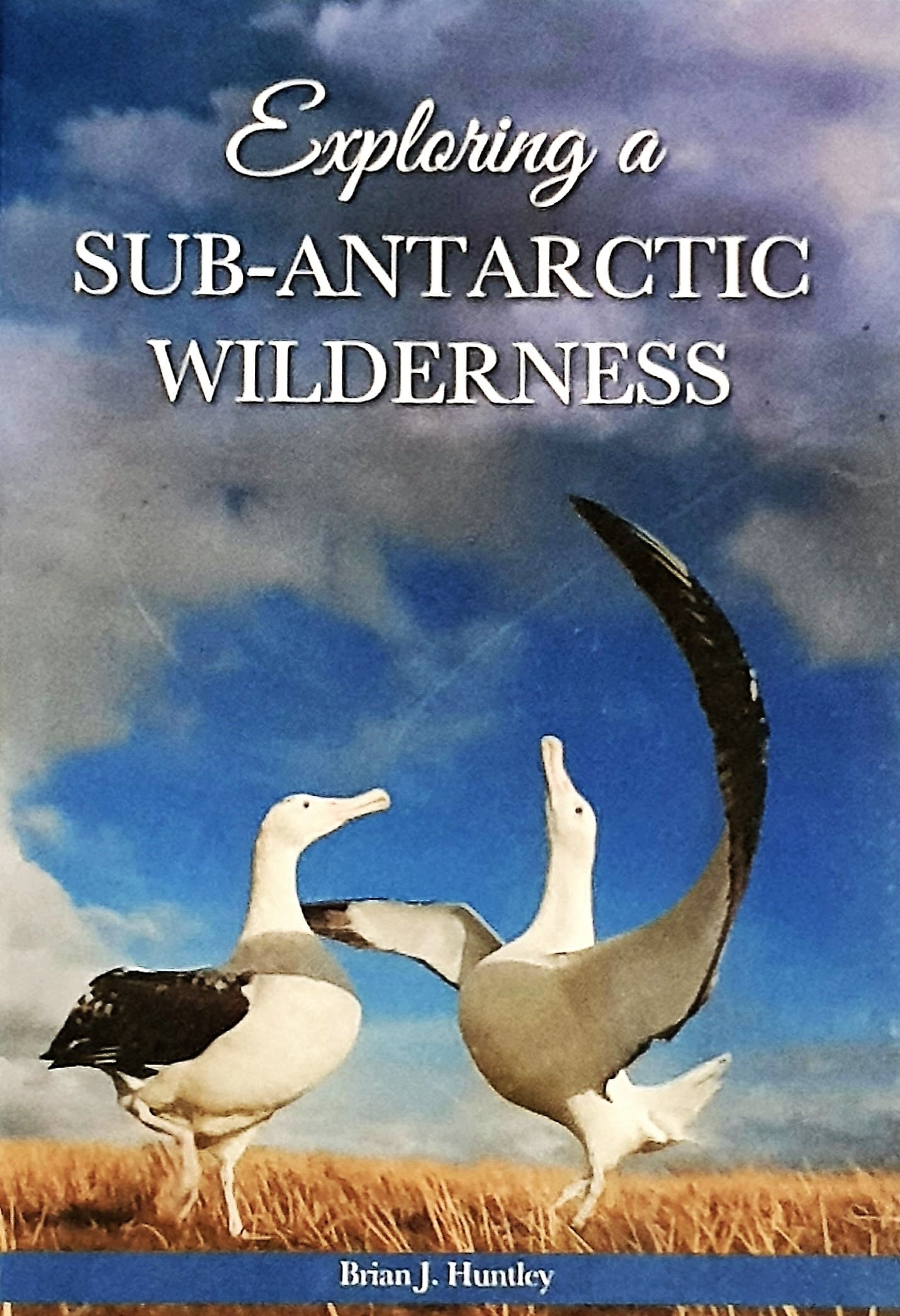 Dr Brian Huntley publication available form the Antarctic Legacy fo South Africa antarcticlegacy@sun.ac.za
Dr Brian Huntley publication available form the Antarctic Legacy fo South Africa antarcticlegacy@sun.ac.za


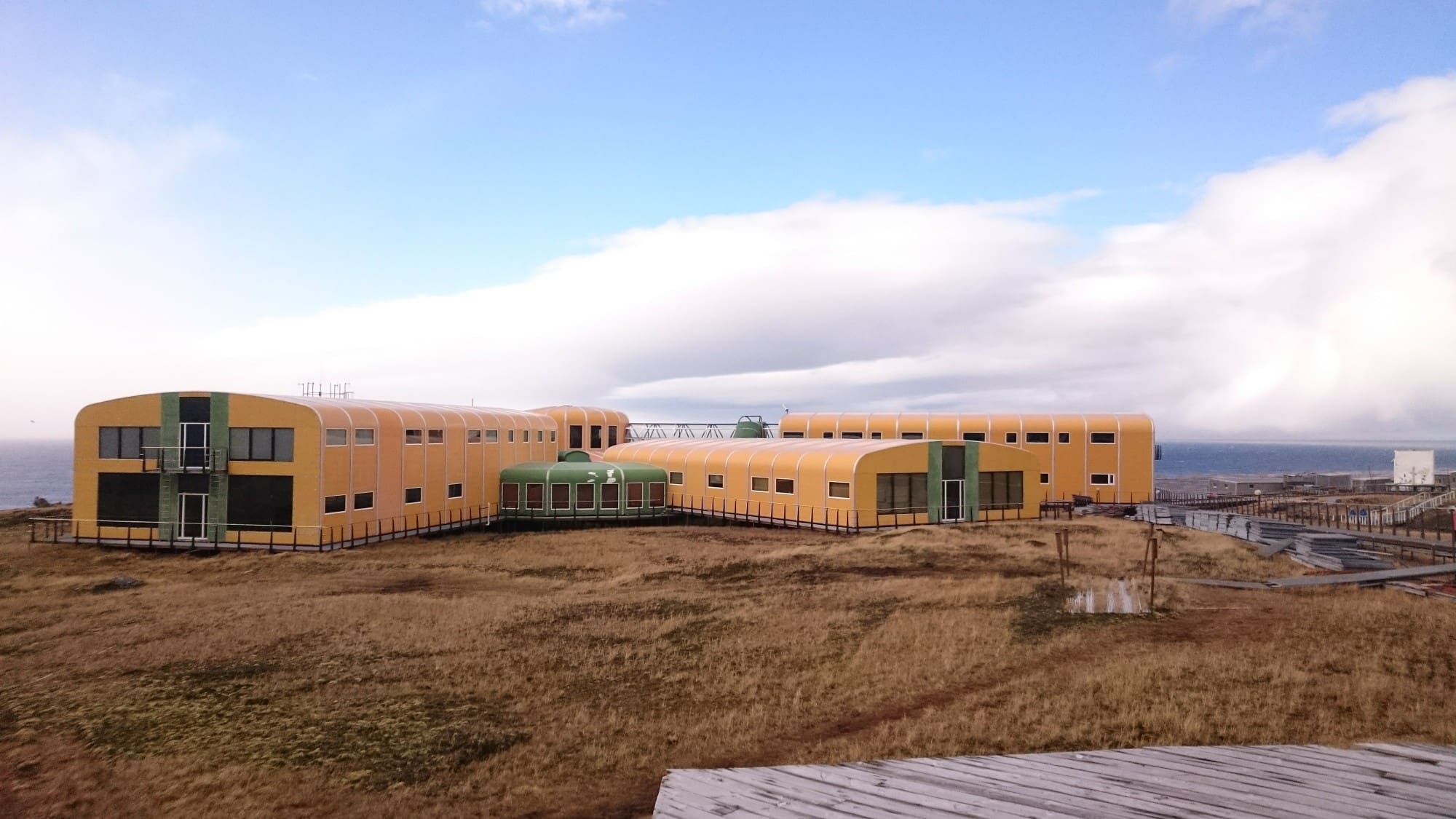 “Marion Island is the jewel in South Africa’s island crown – it is huge and beautiful, hosts an astonishing array of endemic species and charismatic marine megafauna, and is pristine. Or nearly pristine.
“Marion Island is the jewel in South Africa’s island crown – it is huge and beautiful, hosts an astonishing array of endemic species and charismatic marine megafauna, and is pristine. Or nearly pristine.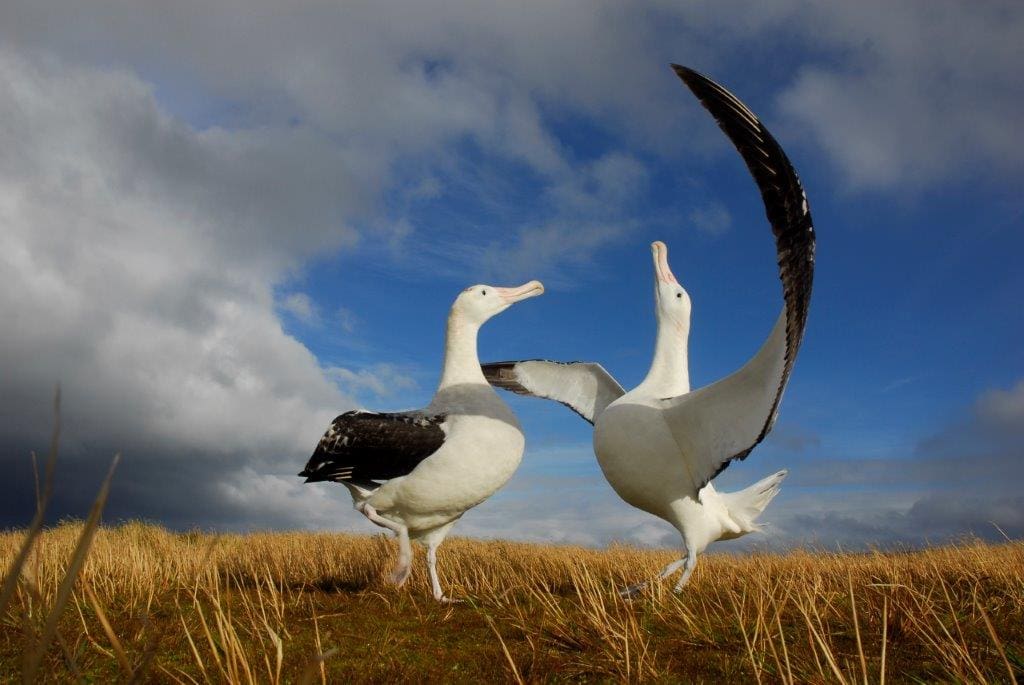 The Mouse-Free Marion project is gaining increasing momentum, as we work towards an eradication operation in the austral winter of 2023. The Mouse-Free Marion Project, a collaborative project underway to eradicate rodents from Marion Island, currently has the following opportunities available:
The Mouse-Free Marion project is gaining increasing momentum, as we work towards an eradication operation in the austral winter of 2023. The Mouse-Free Marion Project, a collaborative project underway to eradicate rodents from Marion Island, currently has the following opportunities available: 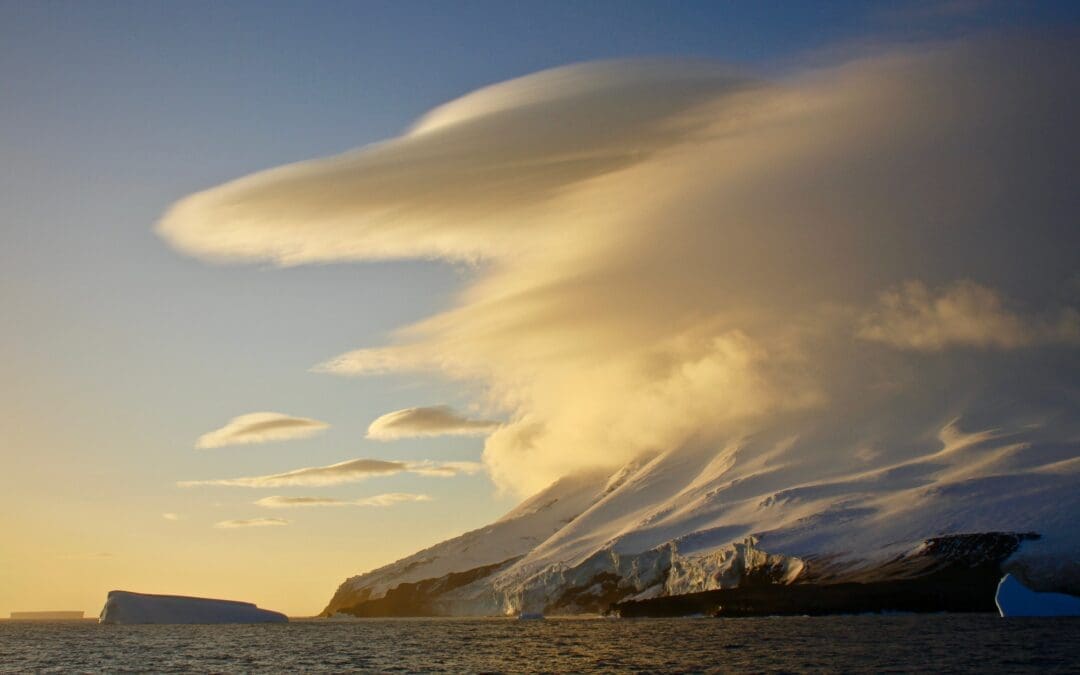
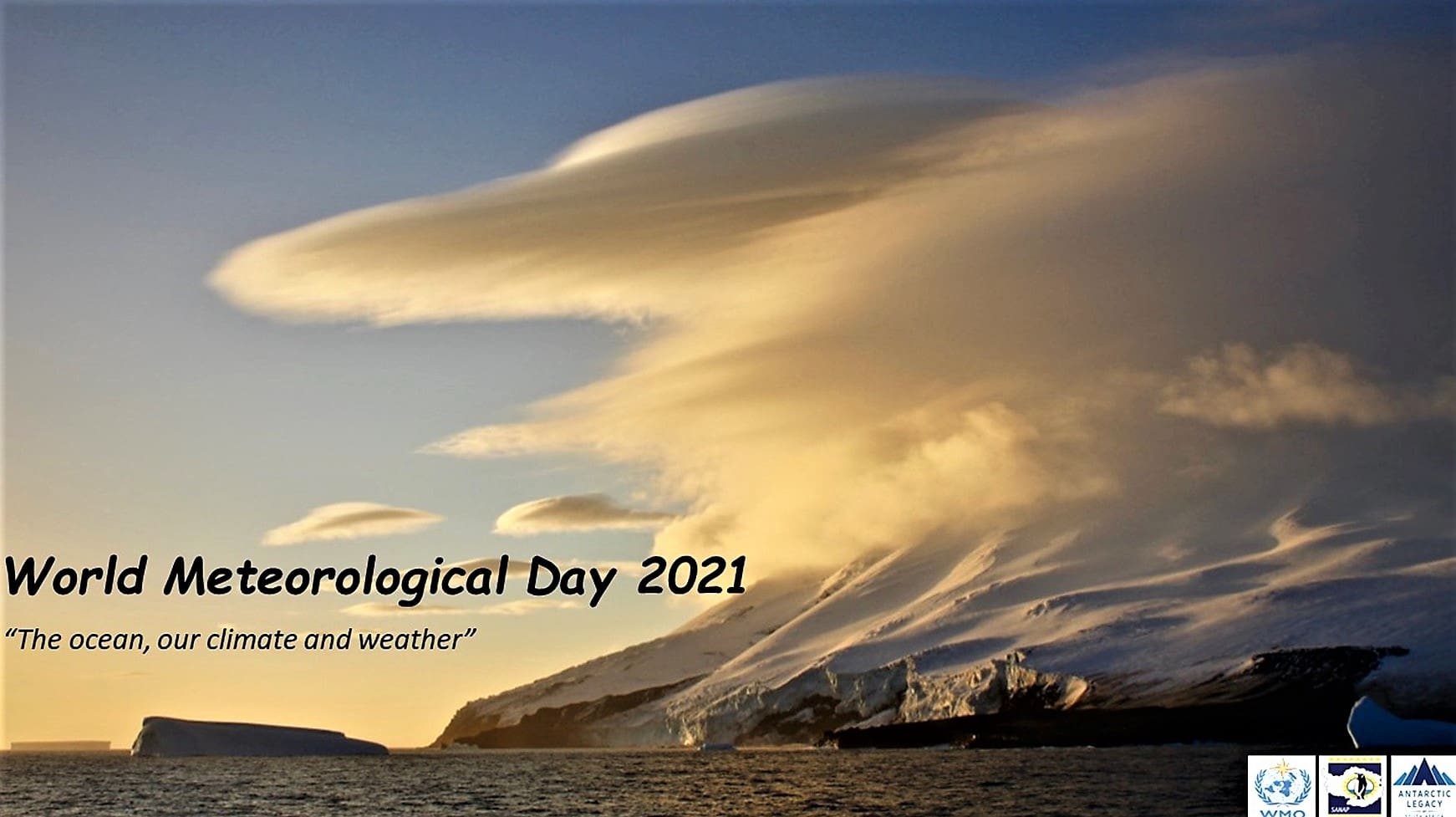
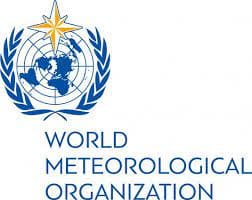 This year the theme for
This year the theme for 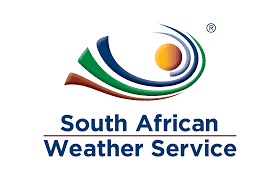 The South African Antarctic Programme (SANAP) and
The South African Antarctic Programme (SANAP) and 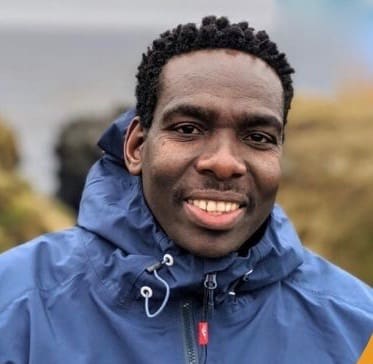




 (l-r) Zinhle Shongwe (Senior Meteorologist), Dylan Seaton (Assistant Meteoroglist) and Asavela Somaxaka (Meteorological Technician).
(l-r) Zinhle Shongwe (Senior Meteorologist), Dylan Seaton (Assistant Meteoroglist) and Asavela Somaxaka (Meteorological Technician). Gerard (Boy) Oppel (Senior Meteorologist)
Gerard (Boy) Oppel (Senior Meteorologist)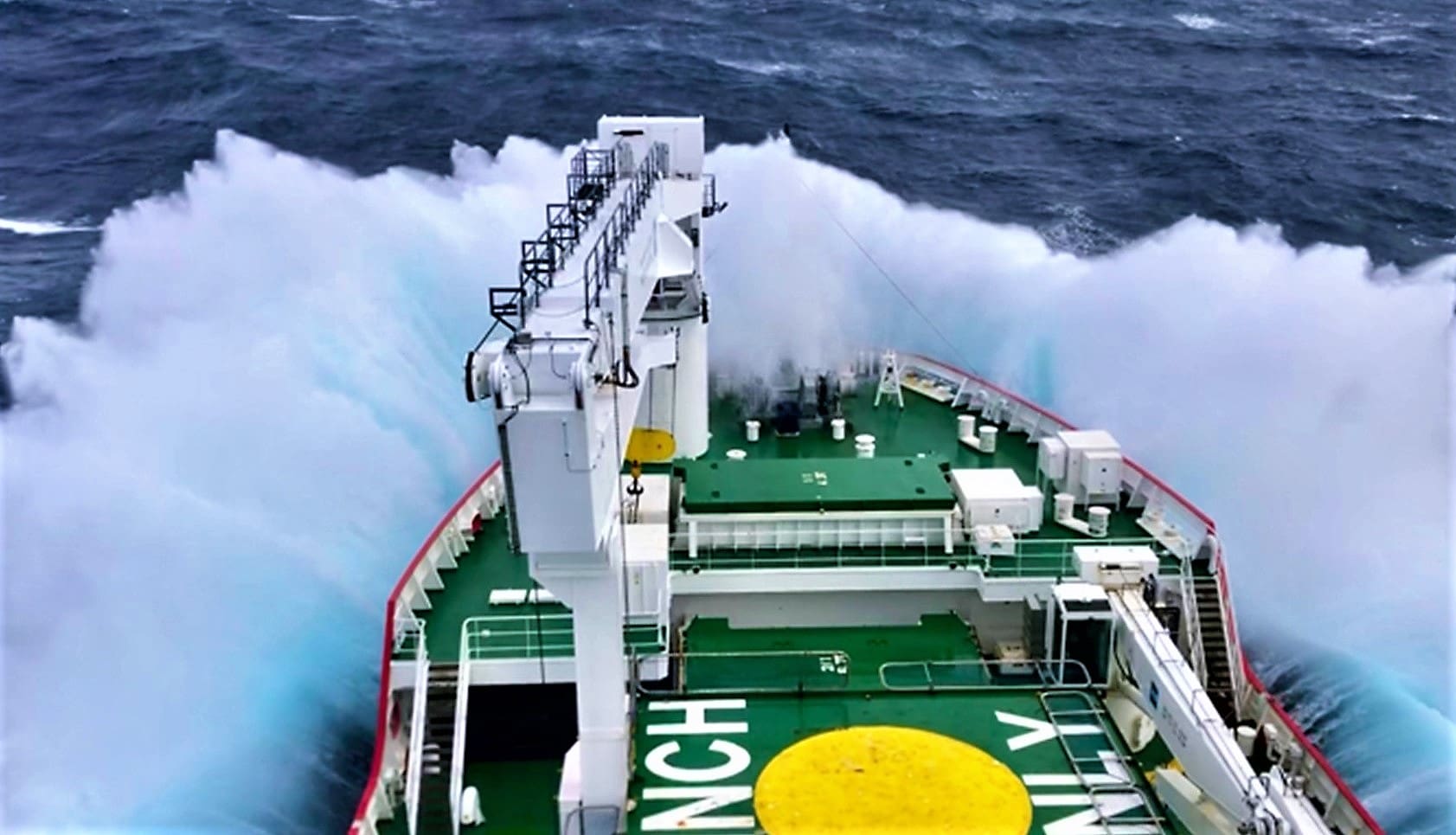 It is also important to note that
It is also important to note that 
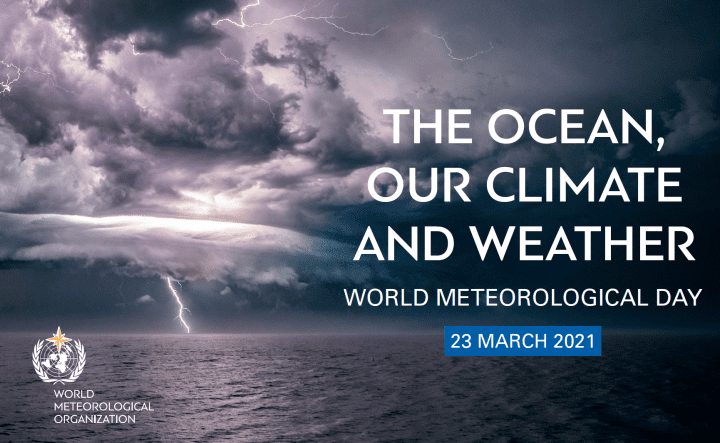 See
See 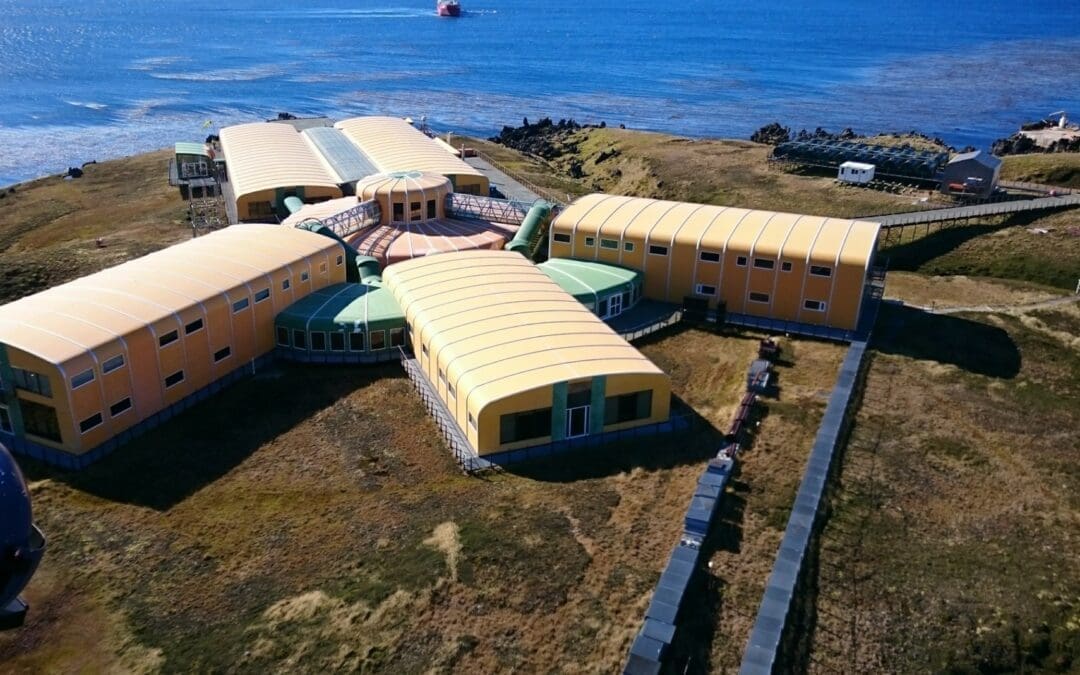
 Department of Environment Forestry and Fisheries Media Release: International wildlife documentary series to be filmed on Marion Island – 16 September 2020
Department of Environment Forestry and Fisheries Media Release: International wildlife documentary series to be filmed on Marion Island – 16 September 2020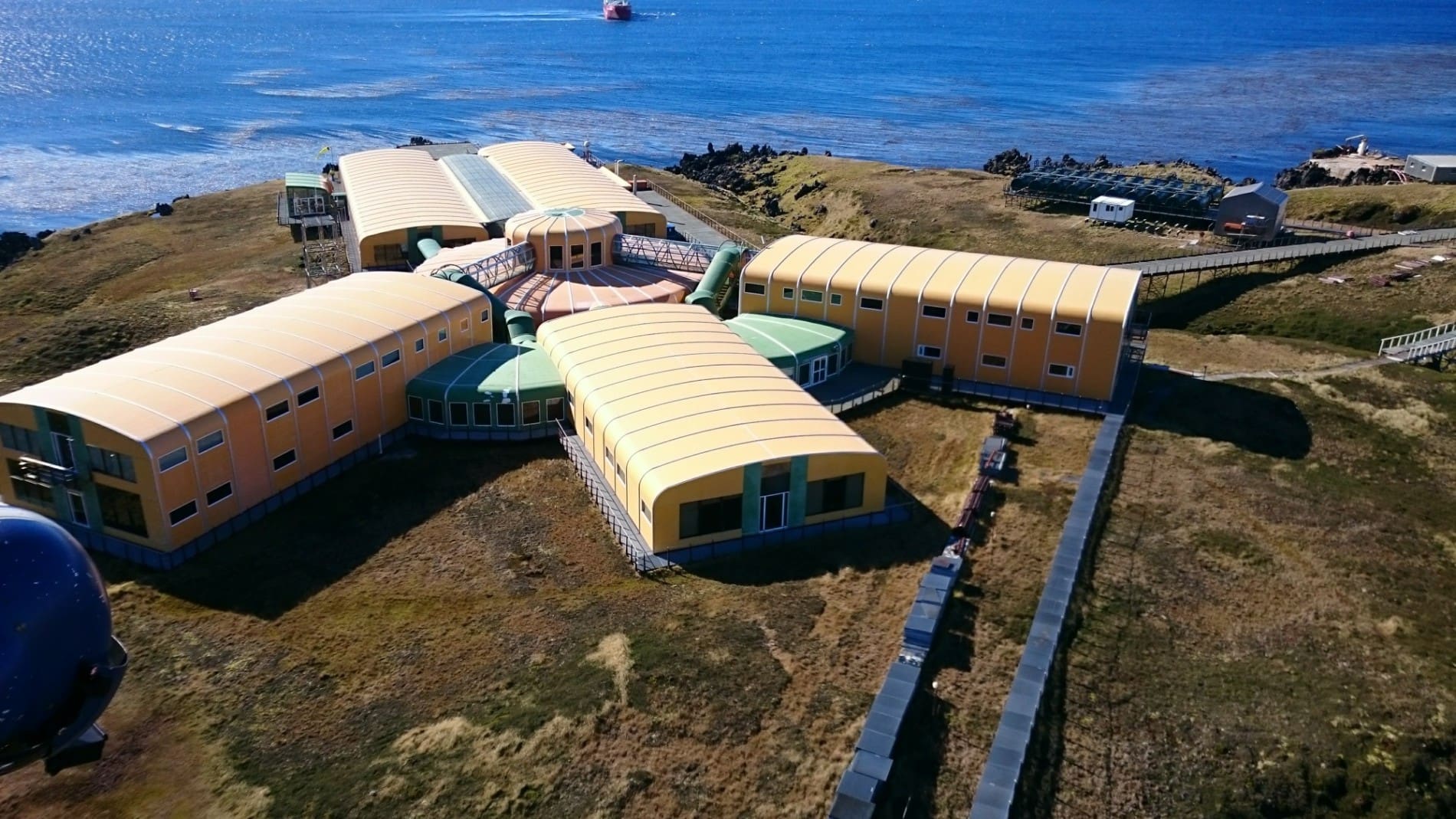 Following a rigorous approval process that involved key stakeholders, the Department of Environment, Forestry and Fisheries (DEFF) has approved a proposal by the United Kingdom (UK) based film and production company, Plimsoll Productions, to film a wildlife documentary series on Marion Island.
Following a rigorous approval process that involved key stakeholders, the Department of Environment, Forestry and Fisheries (DEFF) has approved a proposal by the United Kingdom (UK) based film and production company, Plimsoll Productions, to film a wildlife documentary series on Marion Island.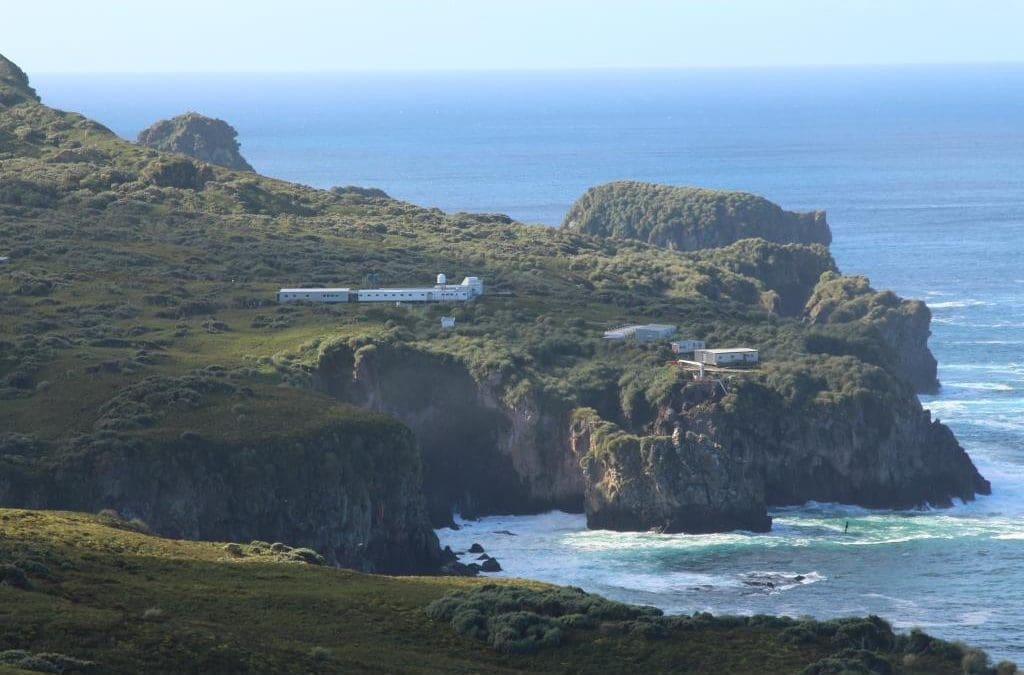
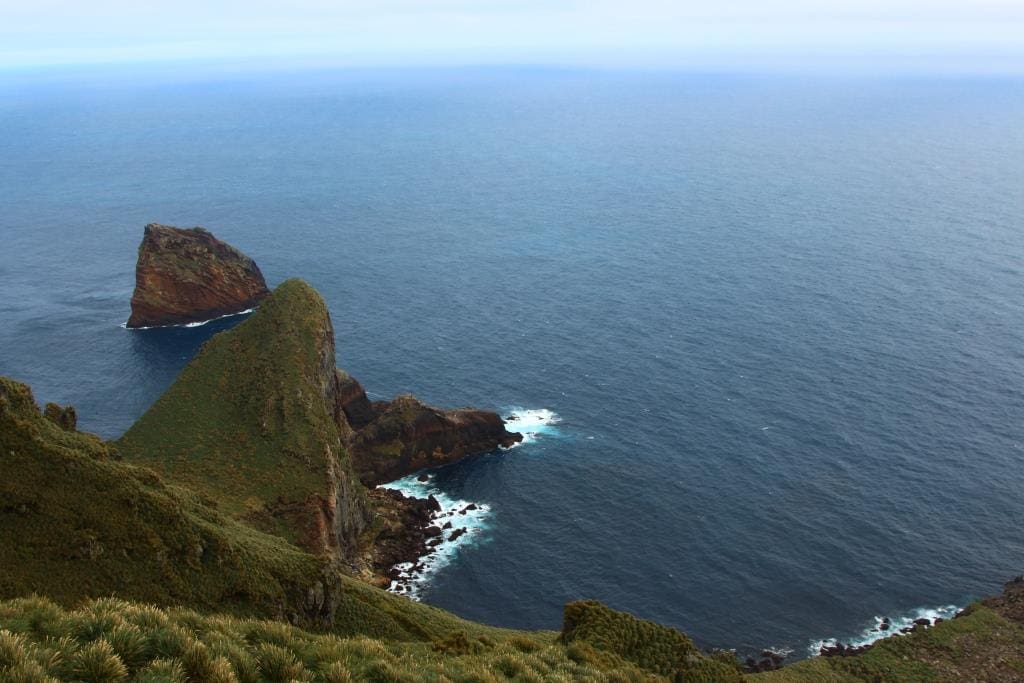
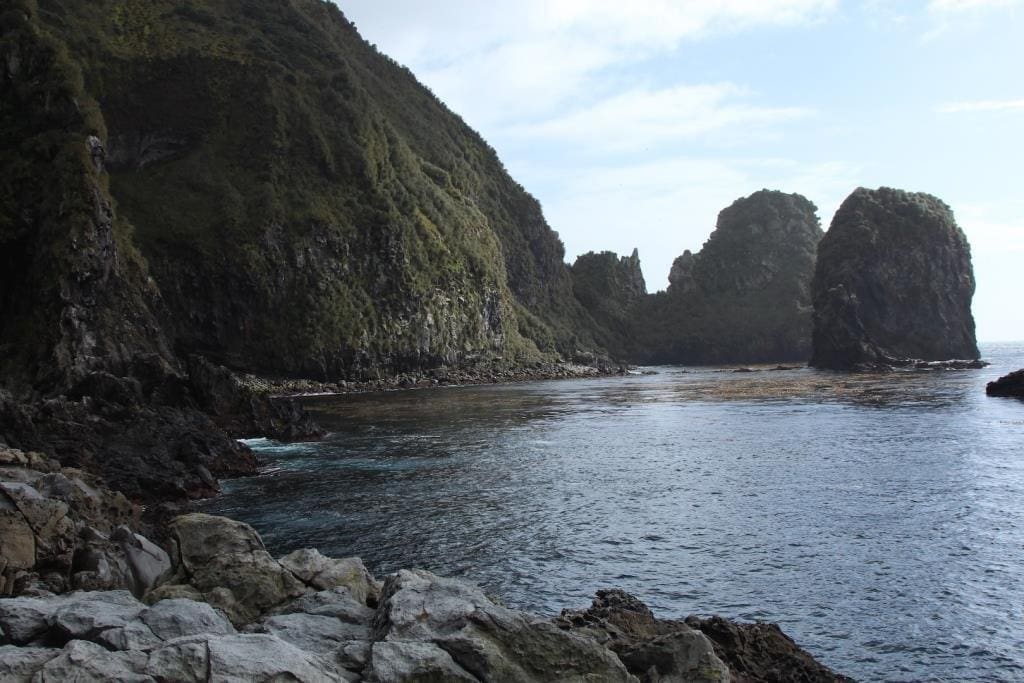
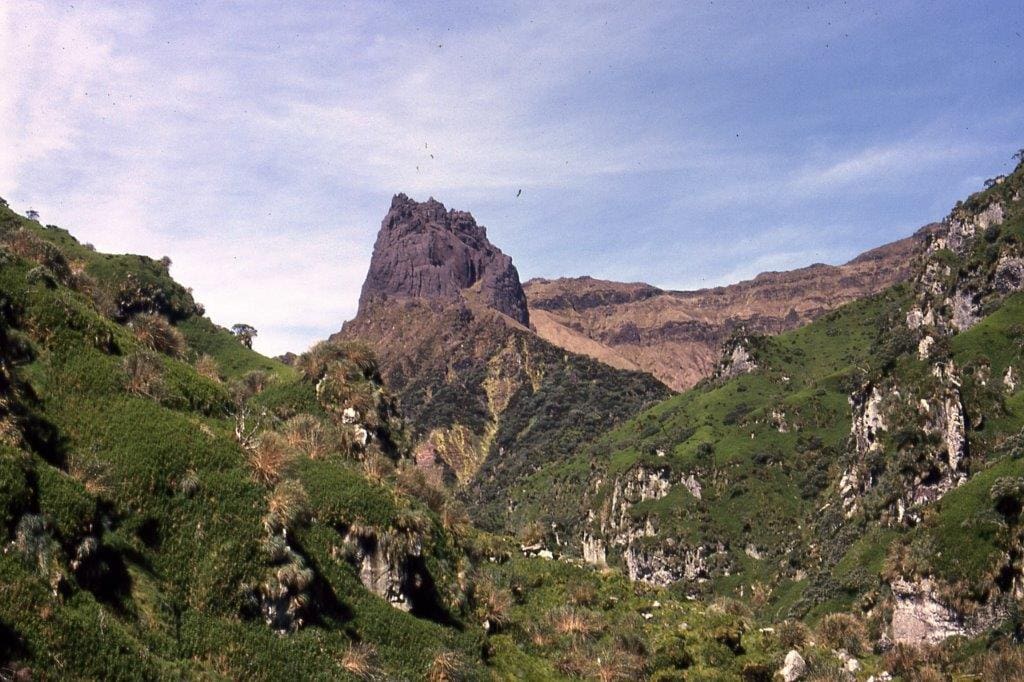 “World Heritage Day or the International Day of Monuments and Sites has always been an occasion to reflect upon – and often visit – heritage sites that are important to us. This year, during the Covid-19 crisis, most of us can only enjoy our heritage online, through virtual visits and tours, as well as social media posts.” – UNESCO (Visit the ALSA archive and the
“World Heritage Day or the International Day of Monuments and Sites has always been an occasion to reflect upon – and often visit – heritage sites that are important to us. This year, during the Covid-19 crisis, most of us can only enjoy our heritage online, through virtual visits and tours, as well as social media posts.” – UNESCO (Visit the ALSA archive and the 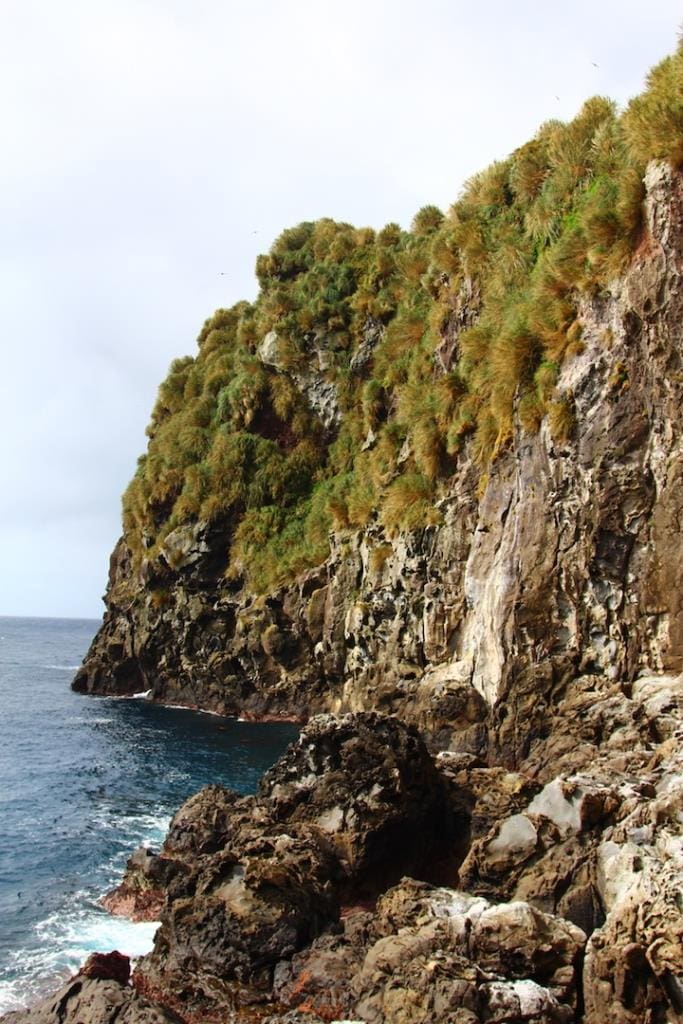
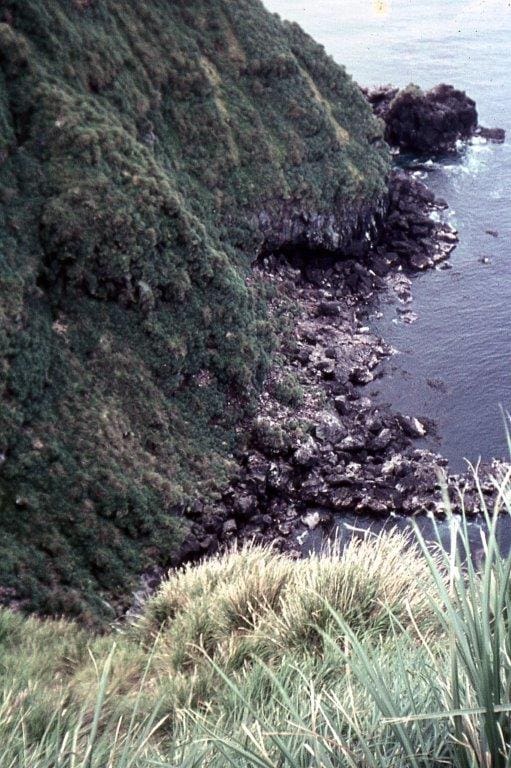
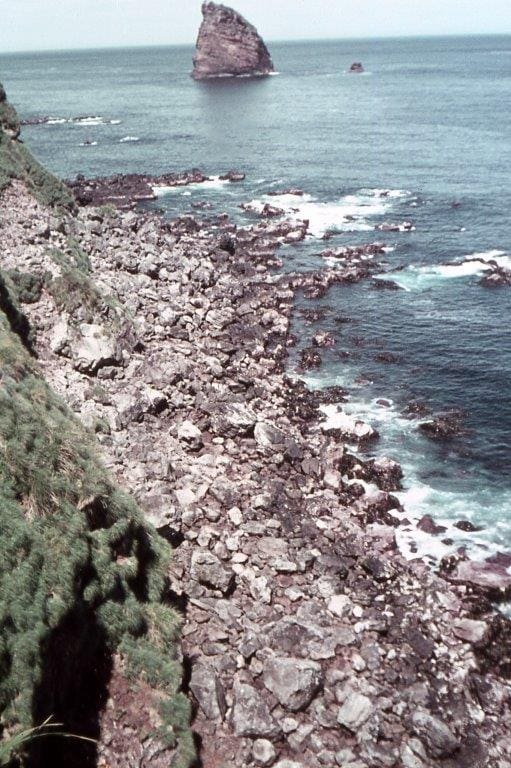
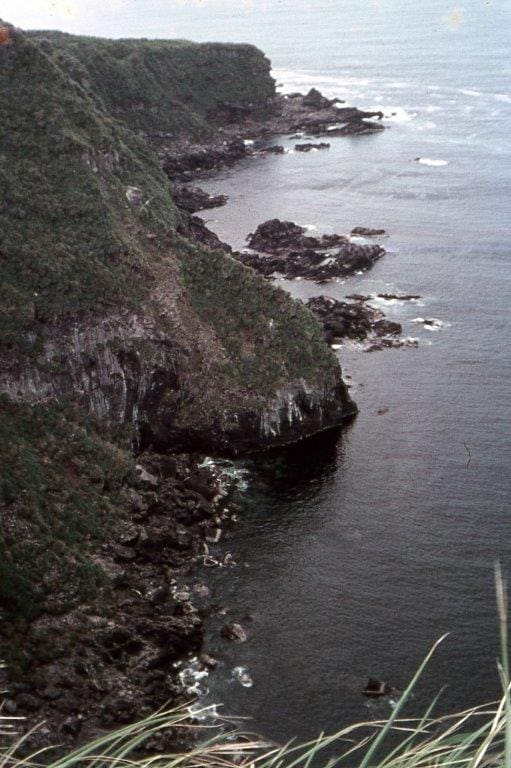 The Gough and Inaccessible Islands World Heritage Site Management Plan focuses on identifying priority actions for the conservation of the property over a five year period, and does not supersede the two existing Management Plans for Gough and Inaccessible Islands. Separate zoning strategies for Gough and Inaccessible Islands have been developed. On Gough, there are Logistic, Marine, Scientific research, and Conservation zones; on Inaccessible there are Accommodation, Natural, Wilderness, and Marine zones. Within these various areas, defined in detail in the respective Management Plans, certain activities are constrained or allowed. A single zoning strategy is needed covering the whole World Heritage property, including the marine area. –
The Gough and Inaccessible Islands World Heritage Site Management Plan focuses on identifying priority actions for the conservation of the property over a five year period, and does not supersede the two existing Management Plans for Gough and Inaccessible Islands. Separate zoning strategies for Gough and Inaccessible Islands have been developed. On Gough, there are Logistic, Marine, Scientific research, and Conservation zones; on Inaccessible there are Accommodation, Natural, Wilderness, and Marine zones. Within these various areas, defined in detail in the respective Management Plans, certain activities are constrained or allowed. A single zoning strategy is needed covering the whole World Heritage property, including the marine area. –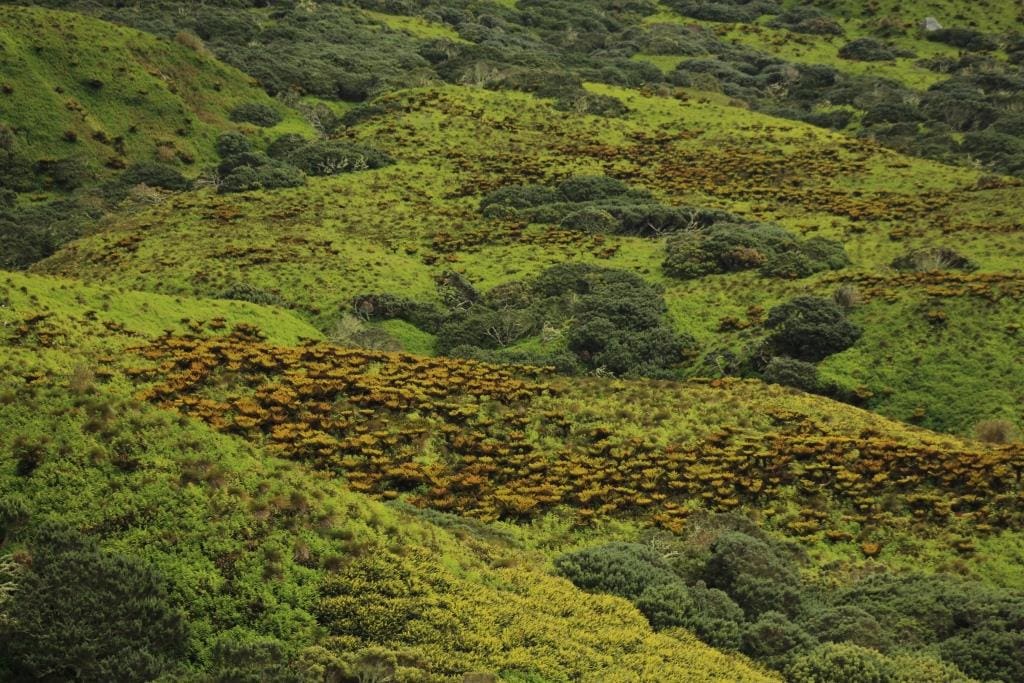
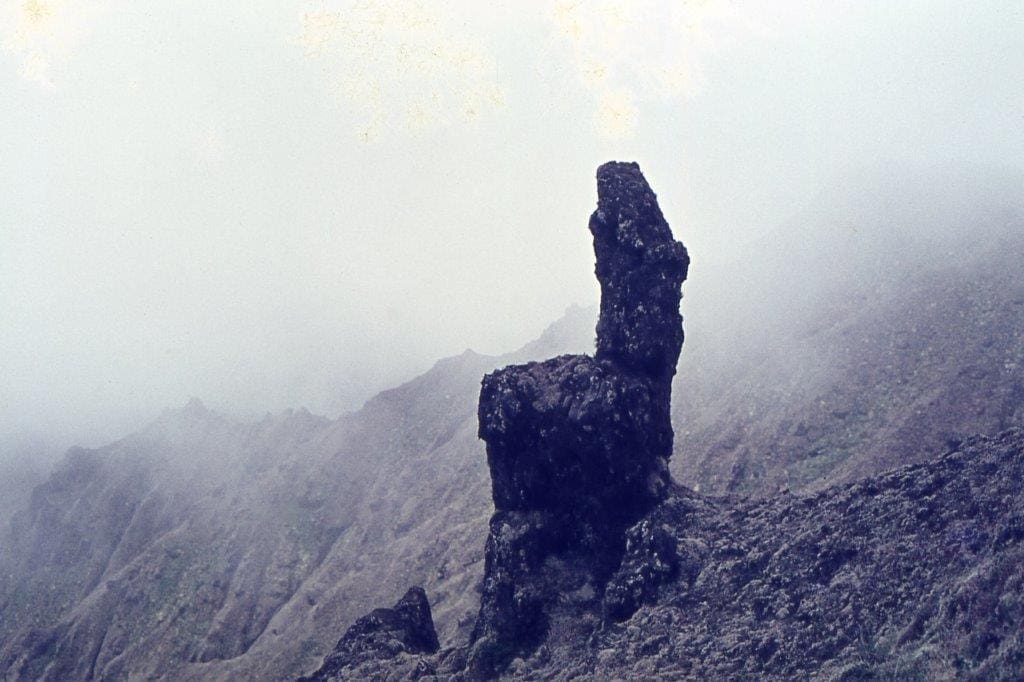
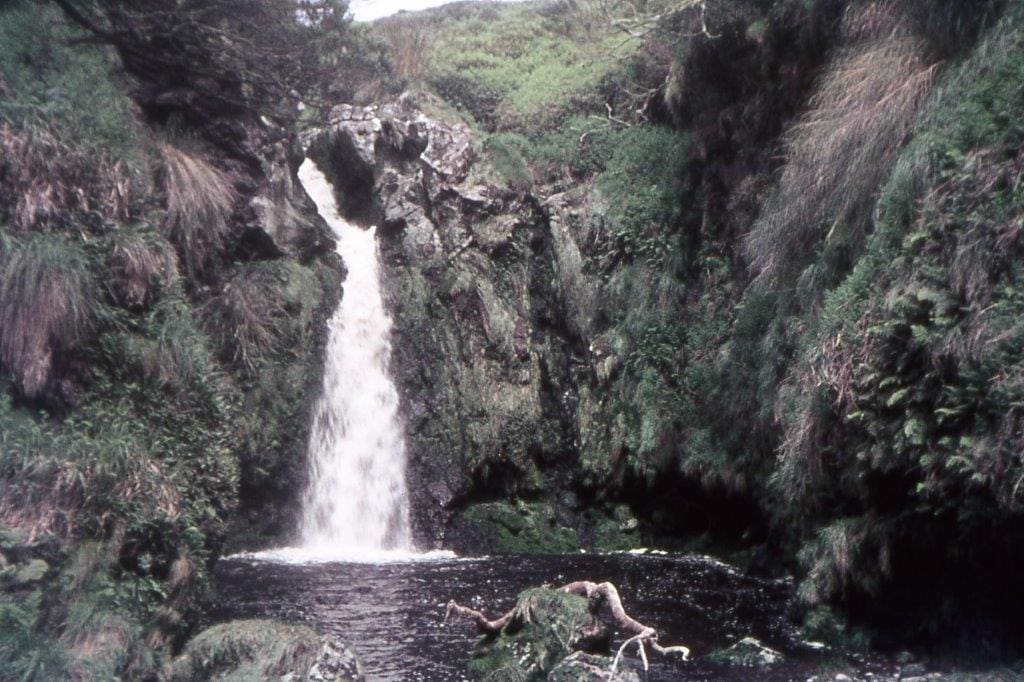 The site, located in the south Atlantic, is one of the least-disrupted island and marine ecosystems in the cool temperate zone. The spectacular cliffs of Gough, towering above the ocean, are home to one of the world’s largest colonies of sea birds. Gough Island is home to two endemic species of land birds, the Gallinule Comeri (Gough Moorhen-below left)and the Gough Rowettia Goughhensis (Gough Finch- below middle,right), as well as to 12 endemic species of plants.
The site, located in the south Atlantic, is one of the least-disrupted island and marine ecosystems in the cool temperate zone. The spectacular cliffs of Gough, towering above the ocean, are home to one of the world’s largest colonies of sea birds. Gough Island is home to two endemic species of land birds, the Gallinule Comeri (Gough Moorhen-below left)and the Gough Rowettia Goughhensis (Gough Finch- below middle,right), as well as to 12 endemic species of plants.
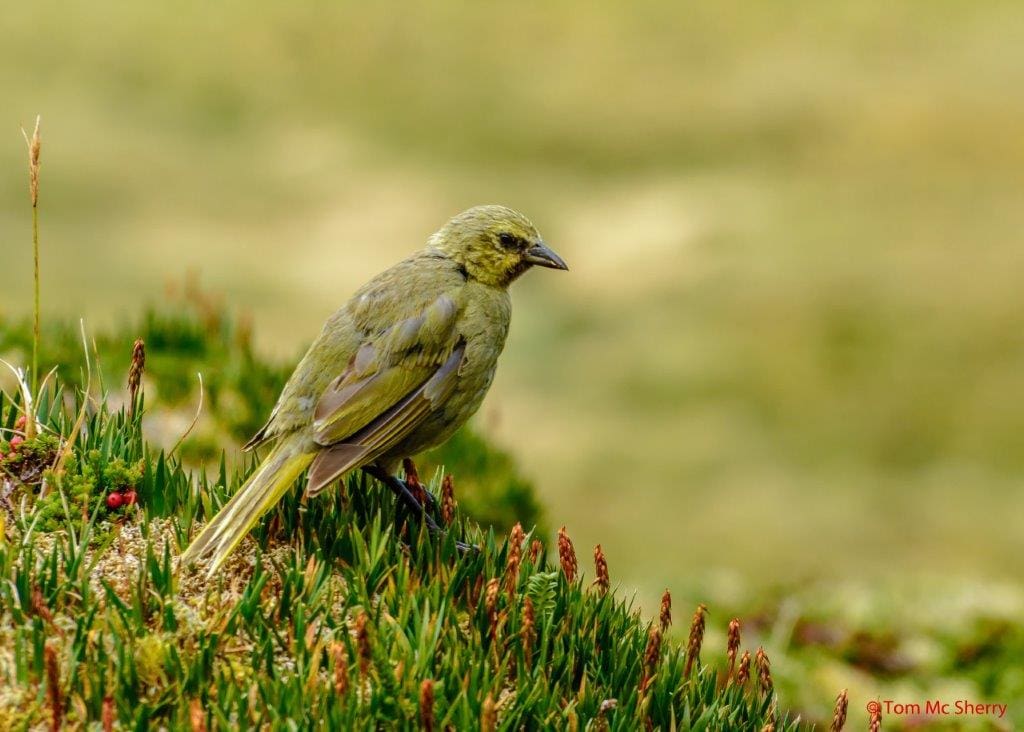
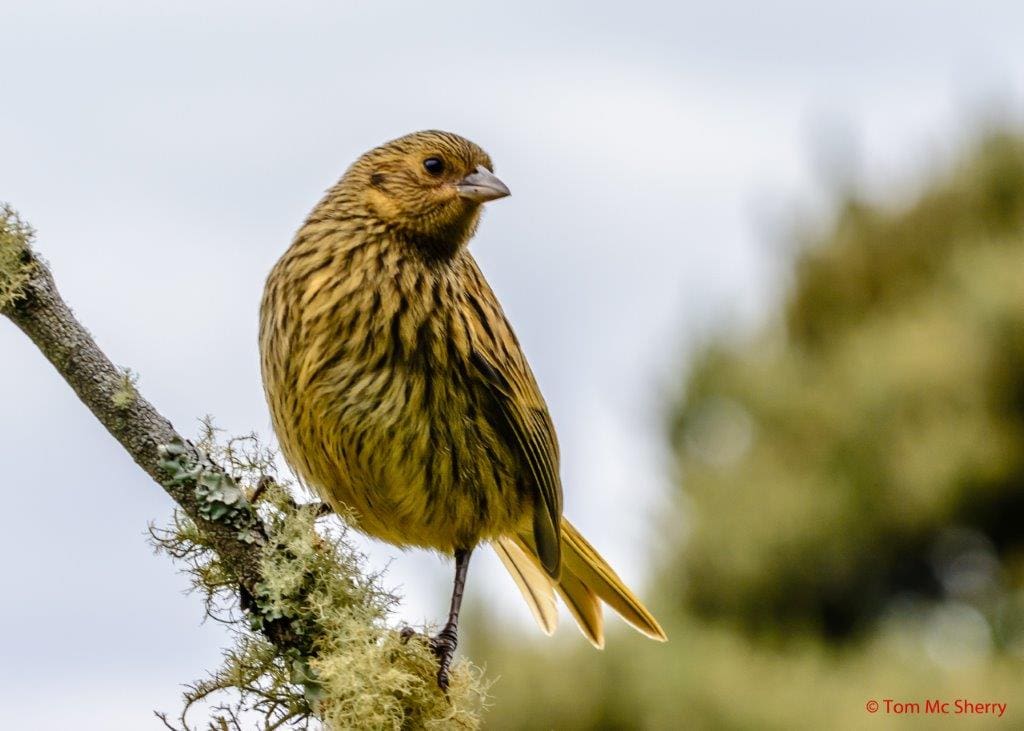
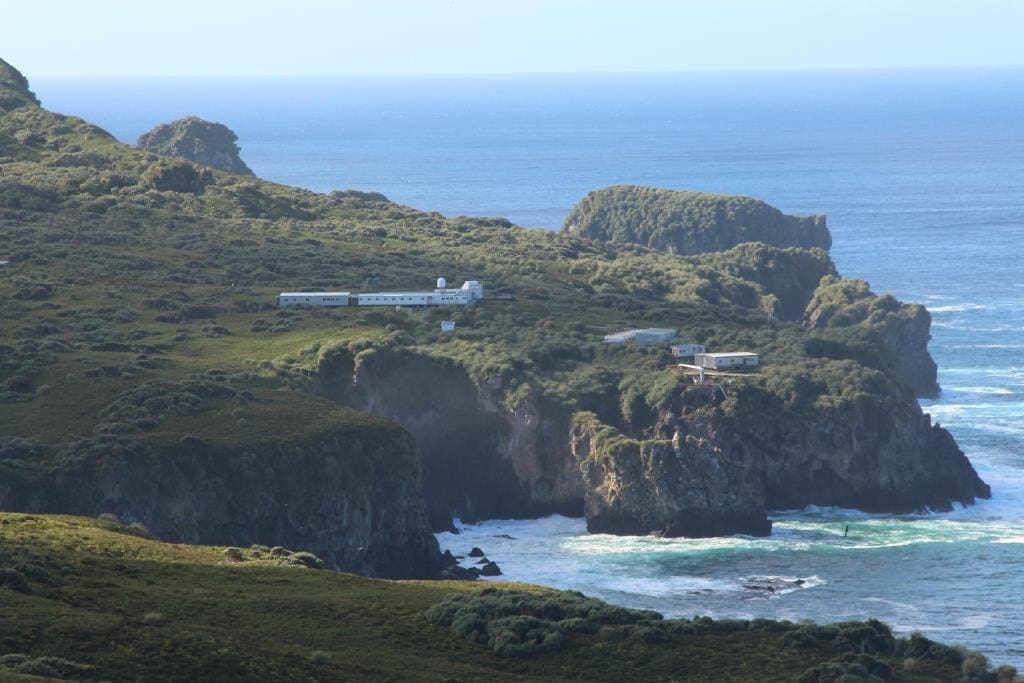 Its position in the path of cold fronts generated in the far Southern Ocean and on their way to South Africa has meant that the conditions experienced at Gough Island serve as an early warning for those that can be expected in South Africa and along the Cape sea route. for this reason, a South African meteorological station has been maintained at the island in an agreement reached with the administration of Tristan da Cunha. From: “Gough Island; a Natural history” by C Hanel, SL Chown and KJ Gaston
Its position in the path of cold fronts generated in the far Southern Ocean and on their way to South Africa has meant that the conditions experienced at Gough Island serve as an early warning for those that can be expected in South Africa and along the Cape sea route. for this reason, a South African meteorological station has been maintained at the island in an agreement reached with the administration of Tristan da Cunha. From: “Gough Island; a Natural history” by C Hanel, SL Chown and KJ Gaston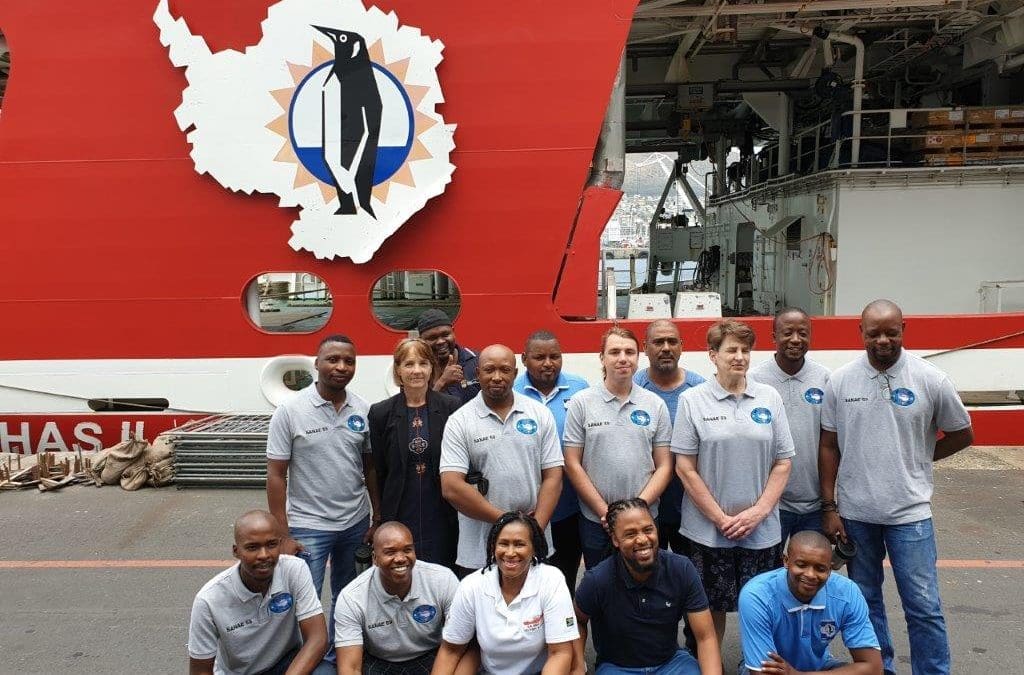

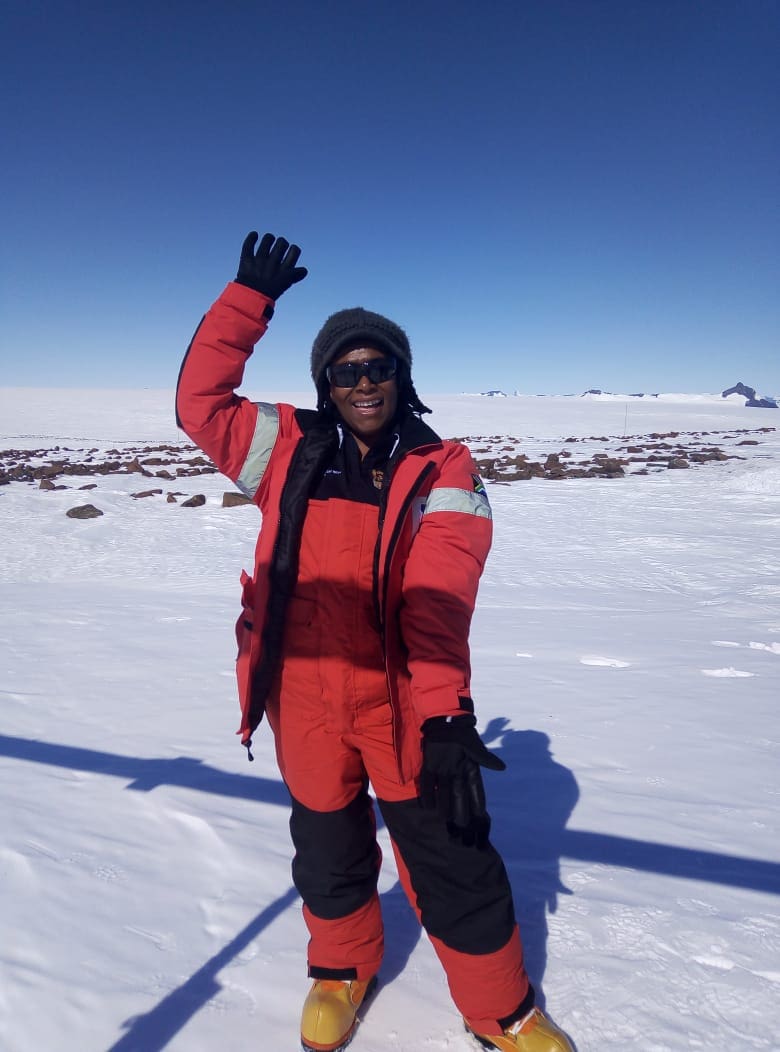 My name is Khuselwa a.k.a. Kusi Ngxabani, Deputy Director: Vessel and Helicopter Management with effect from 01 September 2019. I joined the erstwhile Department of Environmental Affairs & Tourism in 1997 as an Administrative Clerk, in the Directorate: Antarctica and Islands, was promoted to Senior Administration Officer in 2003 and later promoted to the Assistant Director: Scientific Liaison and Administration Support position in the same directorate from 1 April 2008 to 31 May 2015. My directorate is dealing specifically with the South African National Antarctic Programme (SANAP). SANAP’s mandate is to provide logistical support to Researchers (Scientists). From 01 June 2015 I was promoted Deputy Director, heading the Sub-directorate: Travel and Fleet Services in the Directorate: Facilities and Administration Services (Cape Town) within the department. I served the aforementioned directorate until 31 August 2019.
My name is Khuselwa a.k.a. Kusi Ngxabani, Deputy Director: Vessel and Helicopter Management with effect from 01 September 2019. I joined the erstwhile Department of Environmental Affairs & Tourism in 1997 as an Administrative Clerk, in the Directorate: Antarctica and Islands, was promoted to Senior Administration Officer in 2003 and later promoted to the Assistant Director: Scientific Liaison and Administration Support position in the same directorate from 1 April 2008 to 31 May 2015. My directorate is dealing specifically with the South African National Antarctic Programme (SANAP). SANAP’s mandate is to provide logistical support to Researchers (Scientists). From 01 June 2015 I was promoted Deputy Director, heading the Sub-directorate: Travel and Fleet Services in the Directorate: Facilities and Administration Services (Cape Town) within the department. I served the aforementioned directorate until 31 August 2019.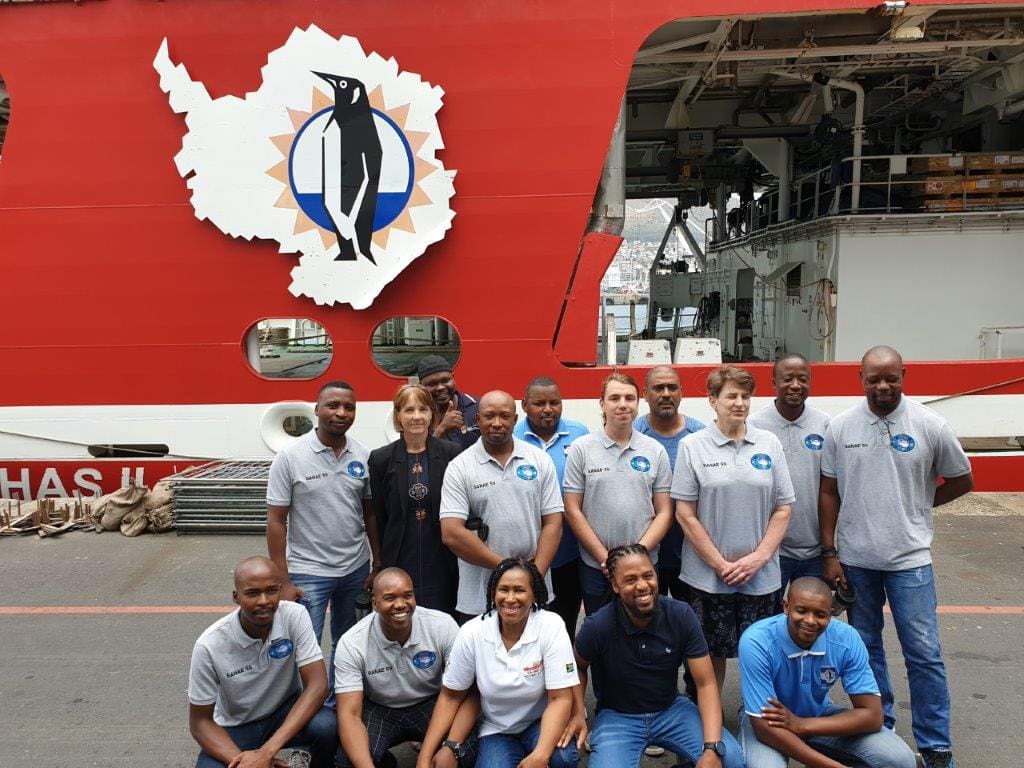 What drives your passion in the job you do in the department? (Image Kusi with departure of SANE59)
What drives your passion in the job you do in the department? (Image Kusi with departure of SANE59)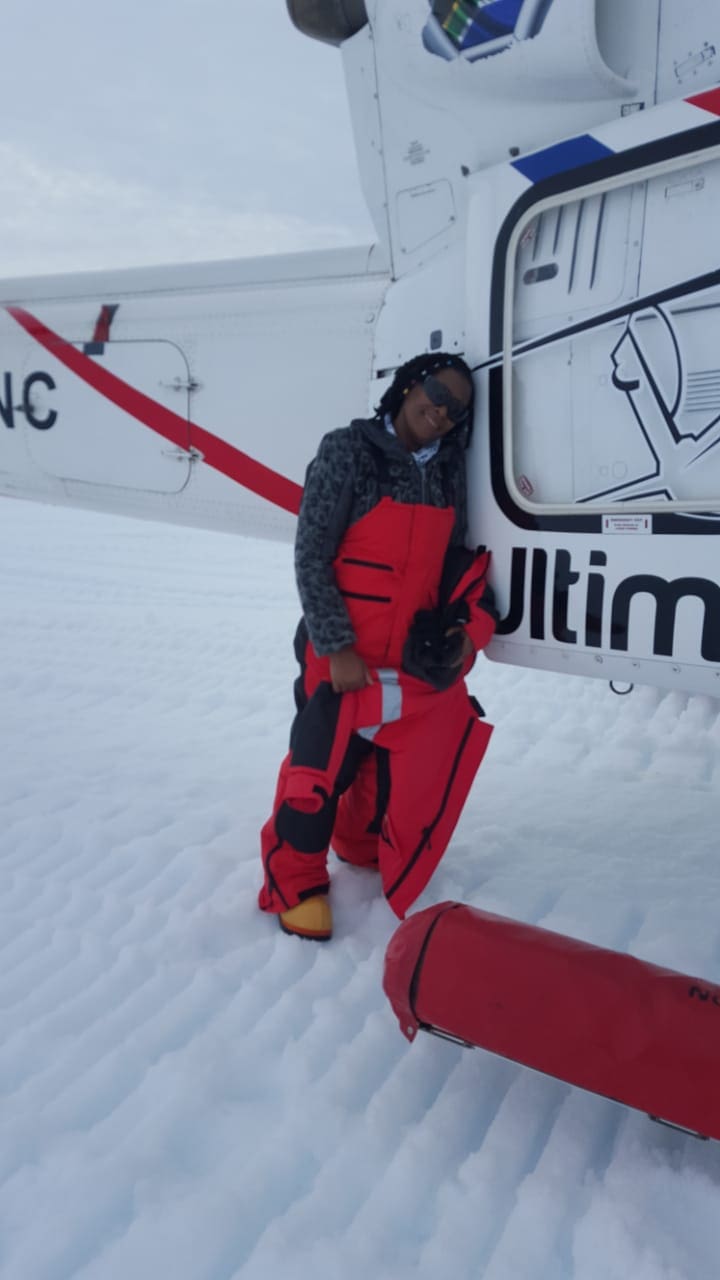
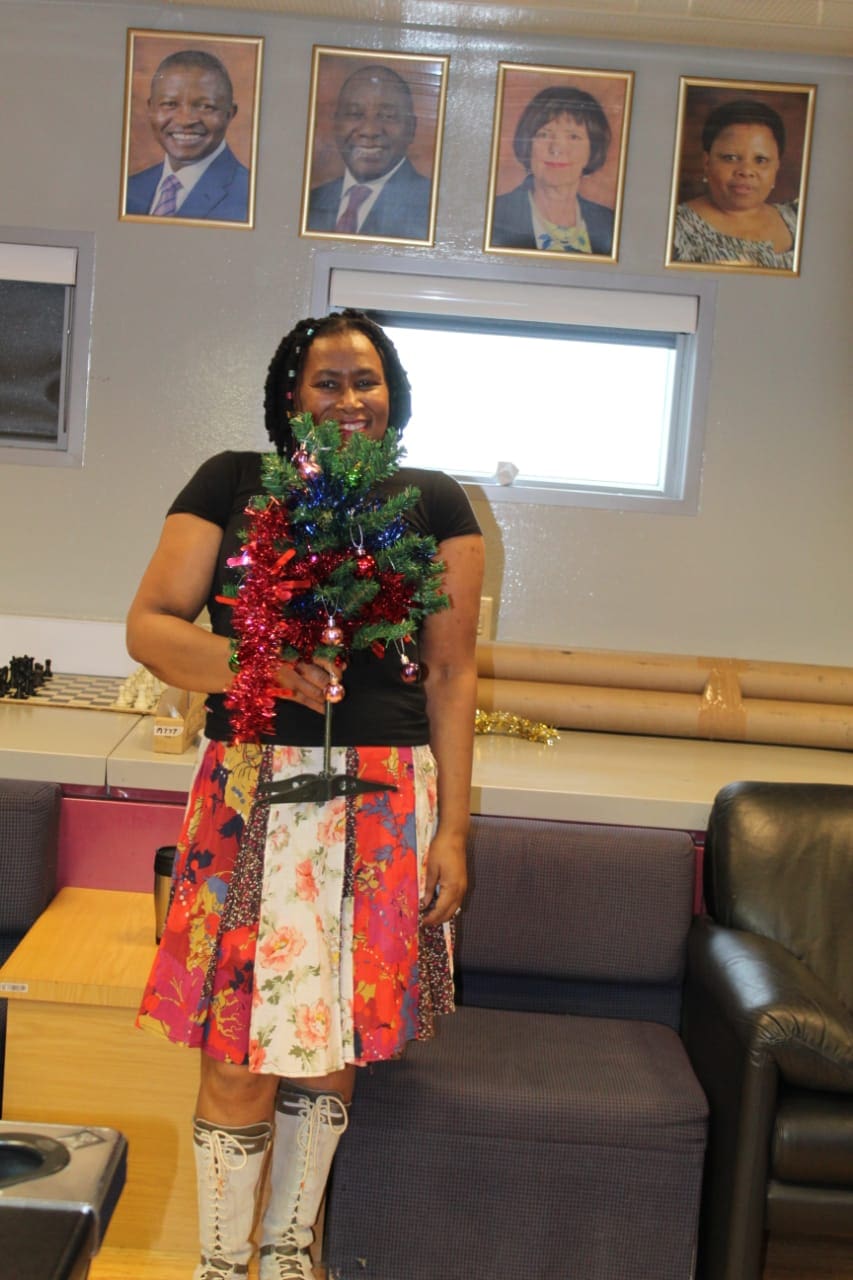 What do you find most challenging and rewarding about working within SANAP?
What do you find most challenging and rewarding about working within SANAP? What would your advice be to those who want to follow the same career path as you?
What would your advice be to those who want to follow the same career path as you?



